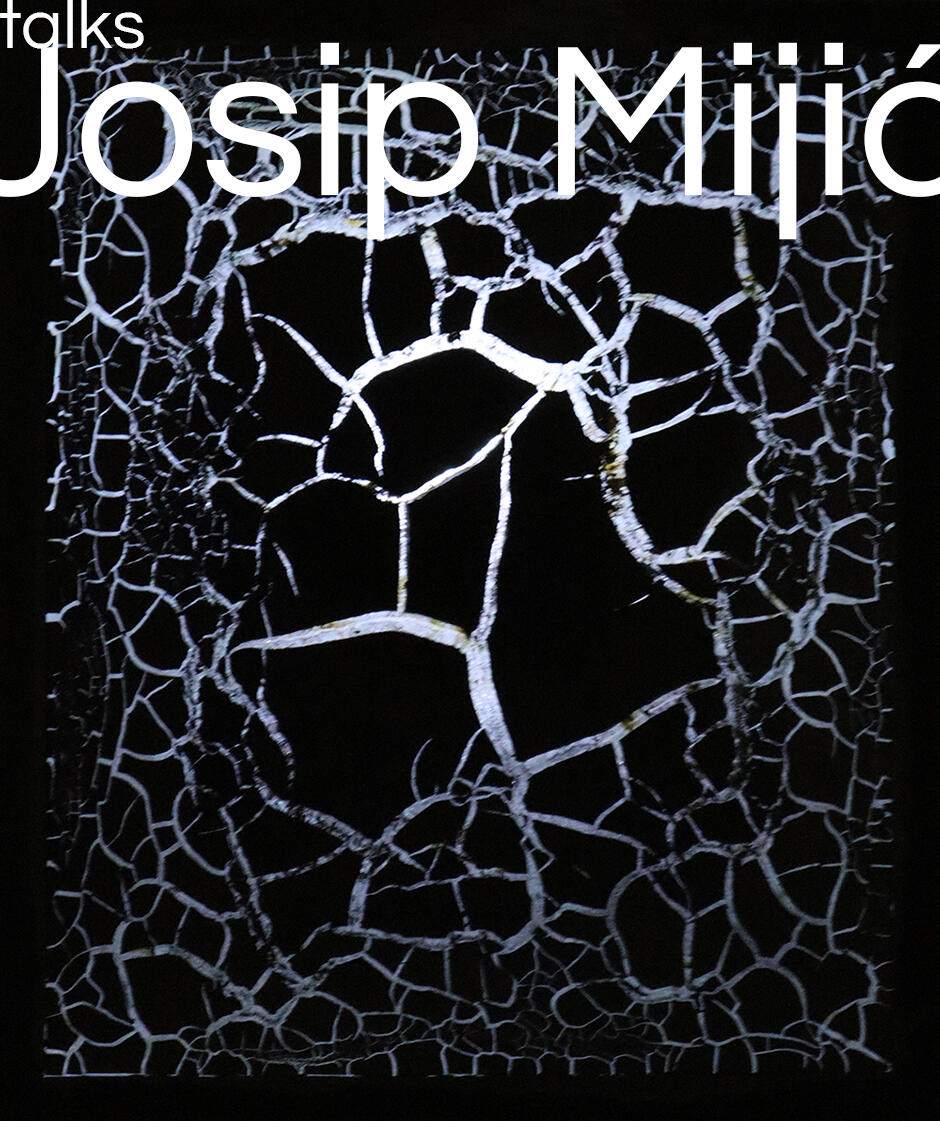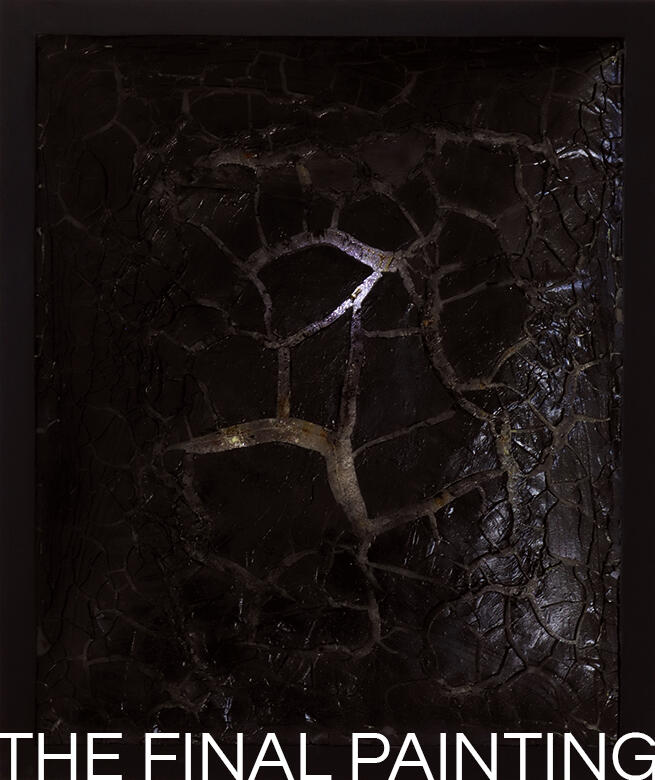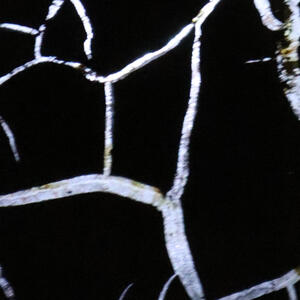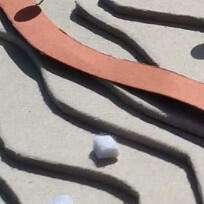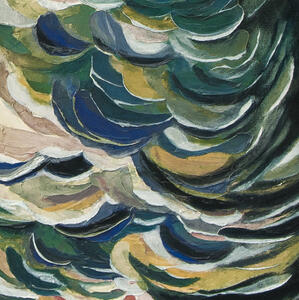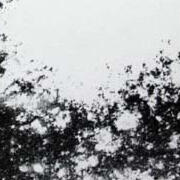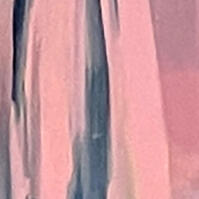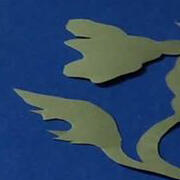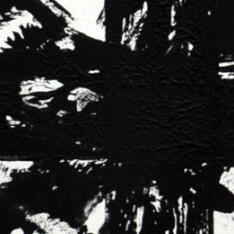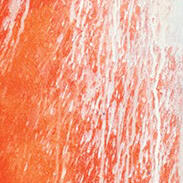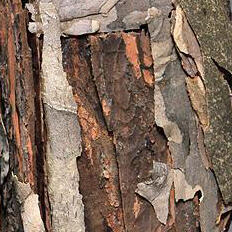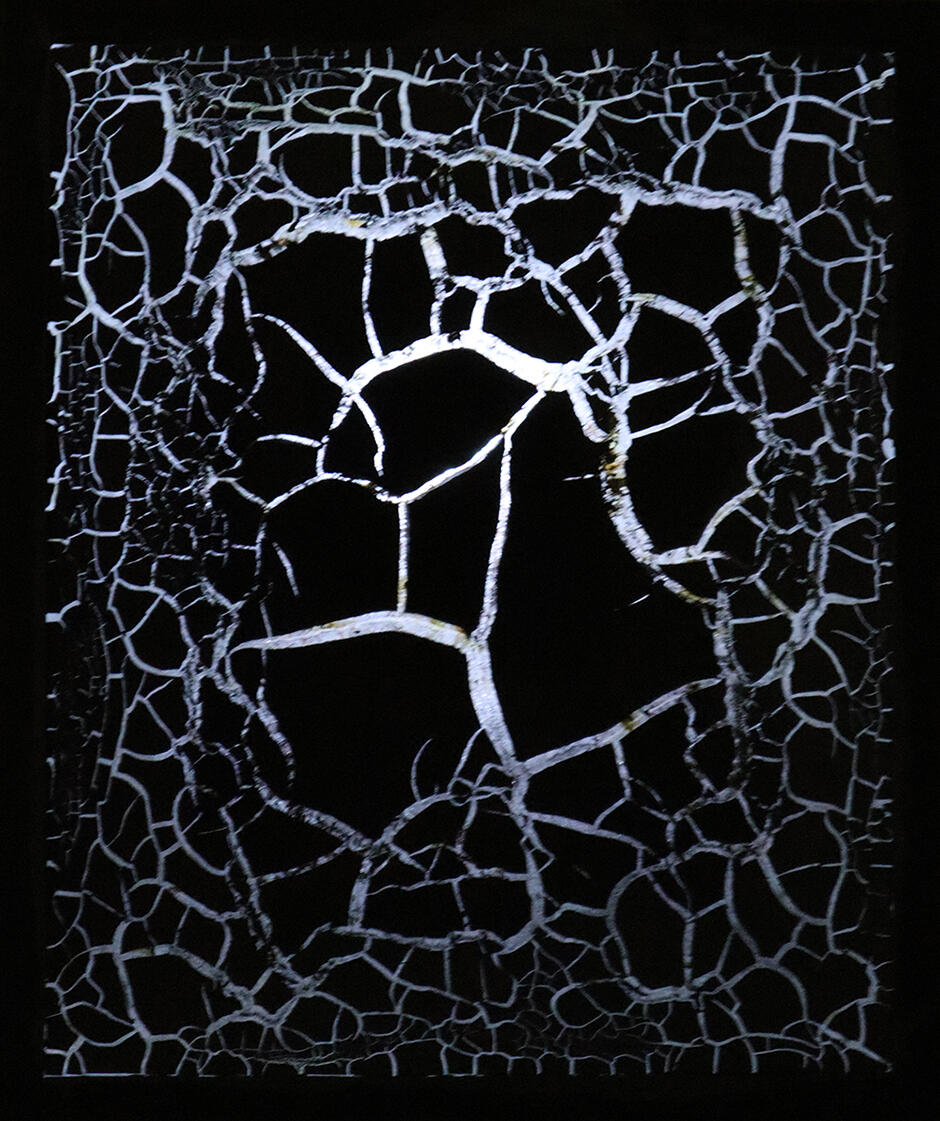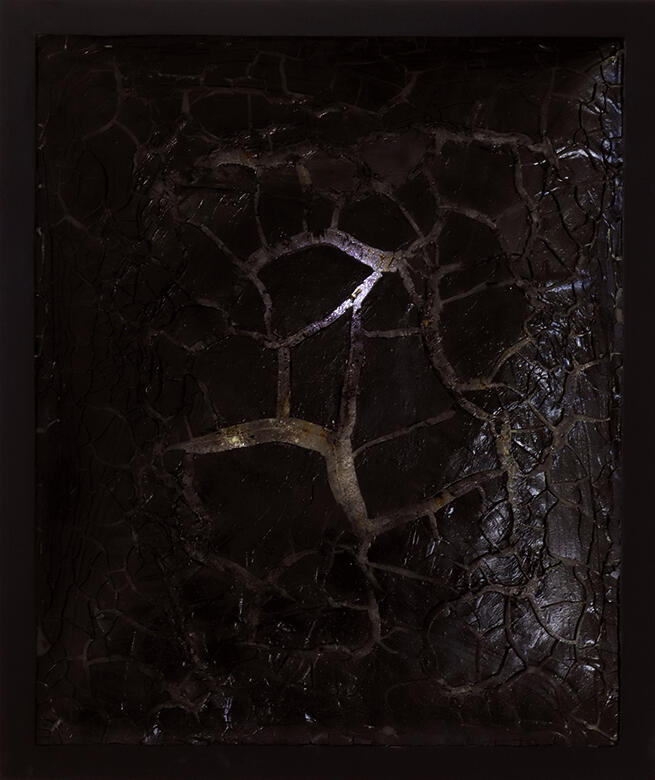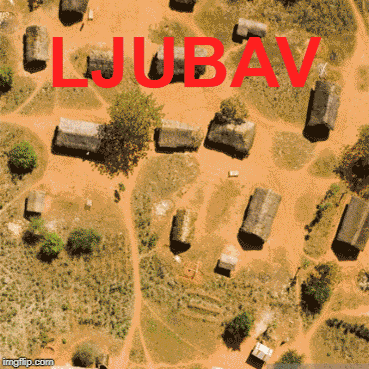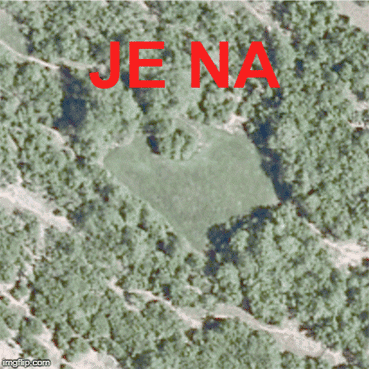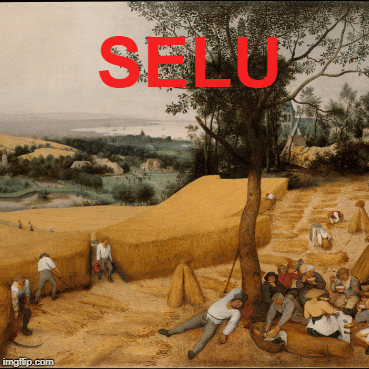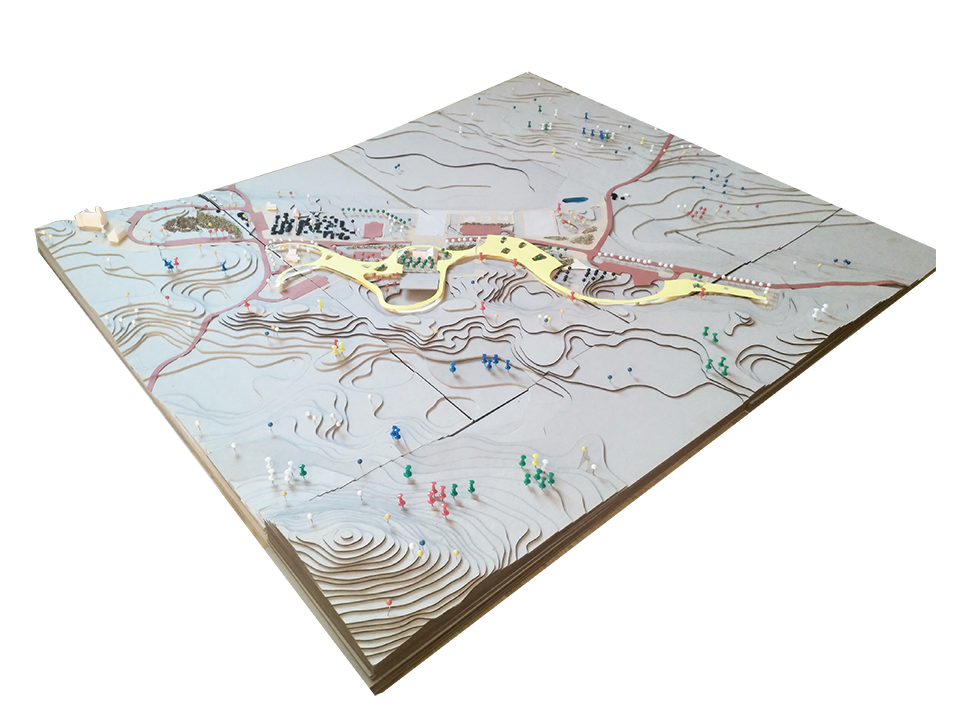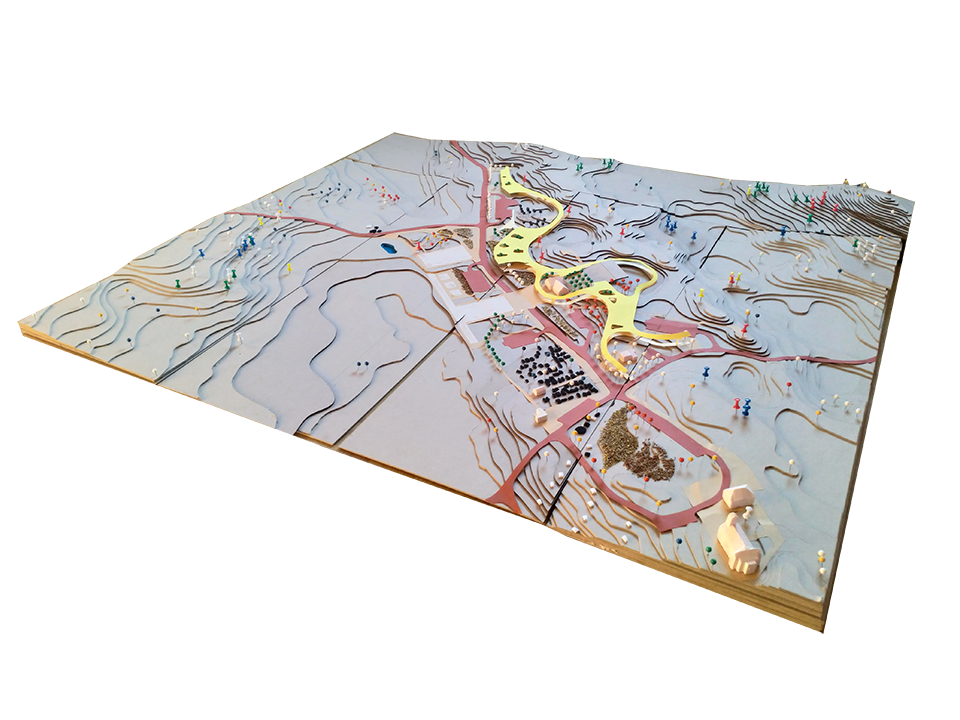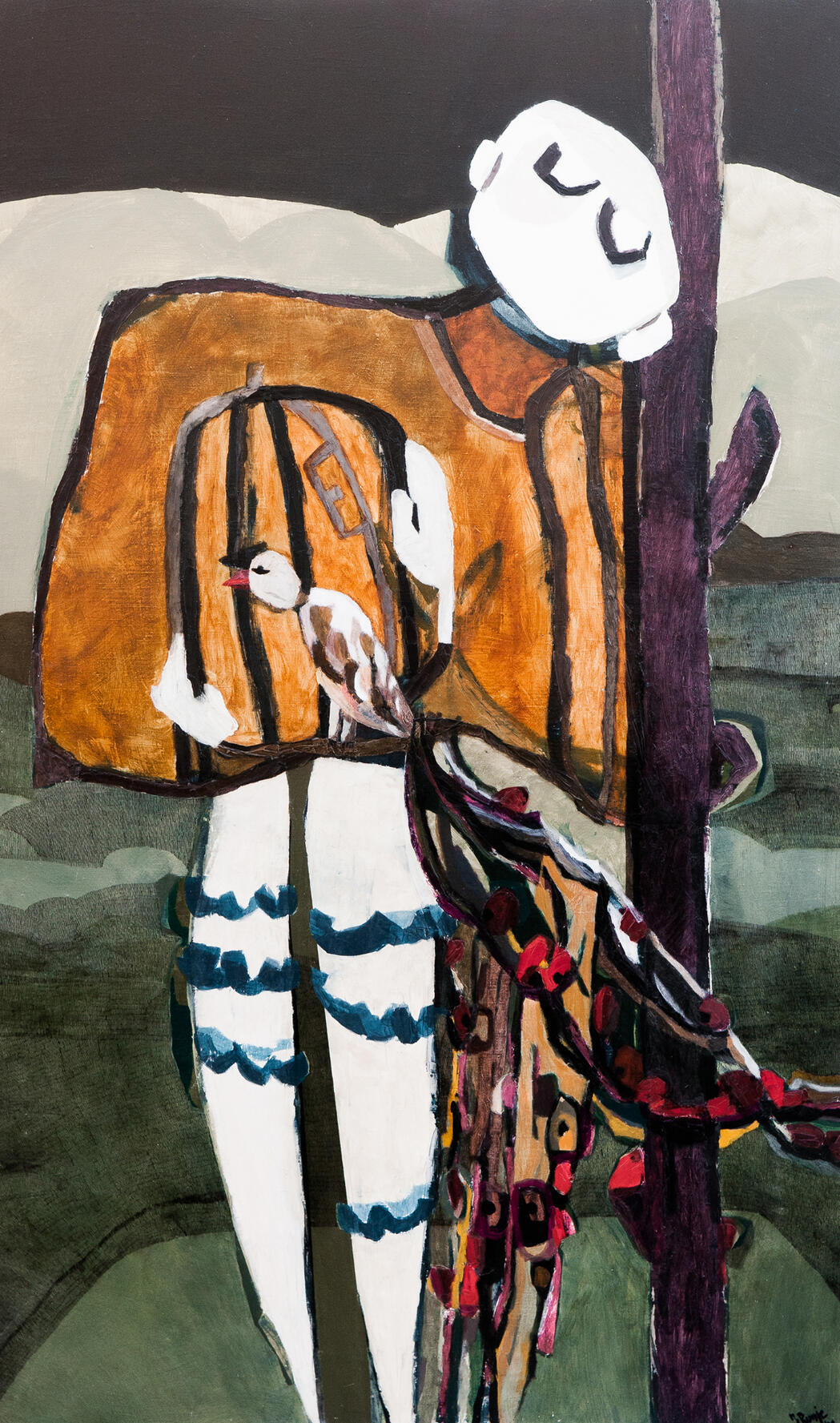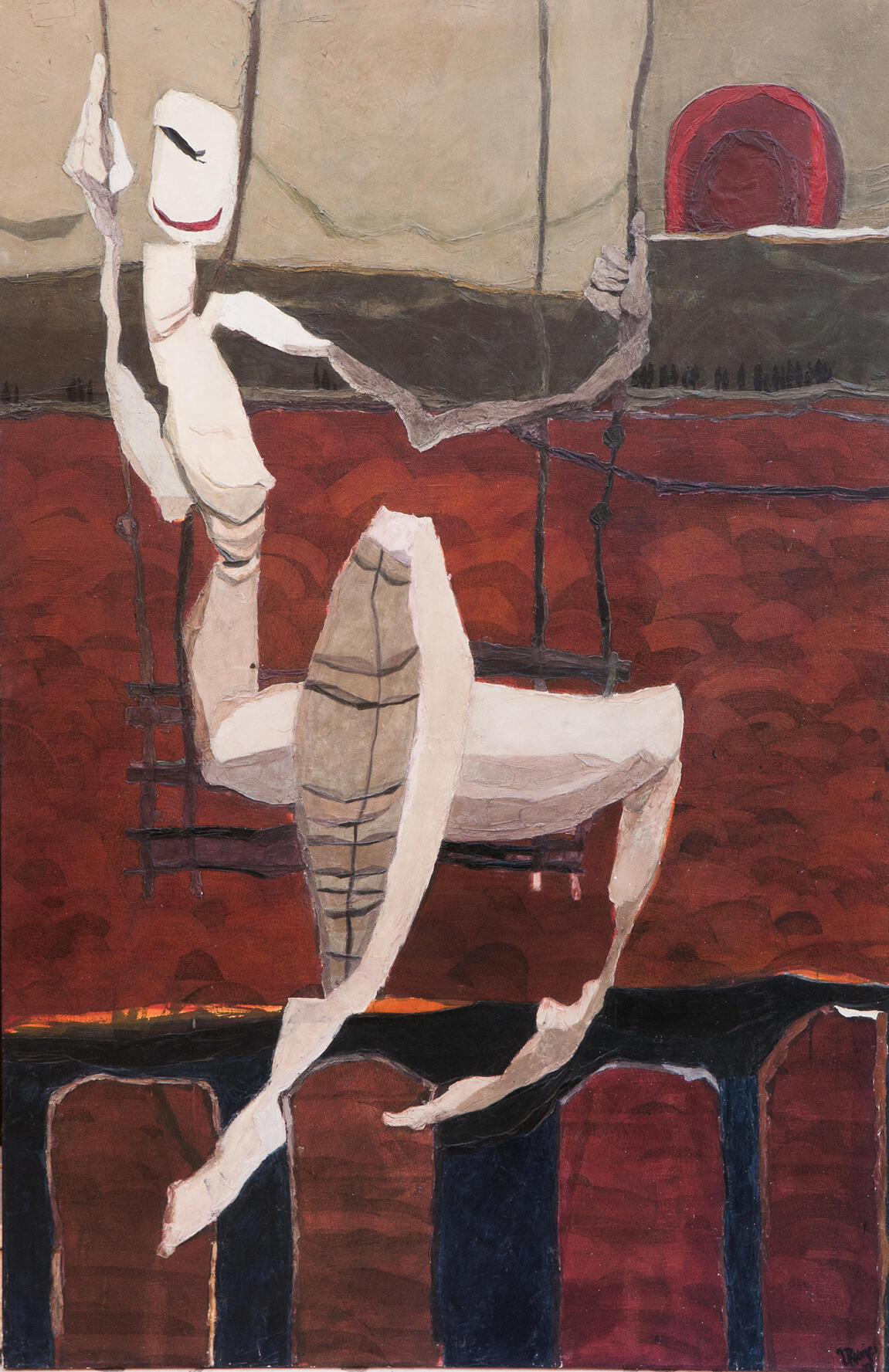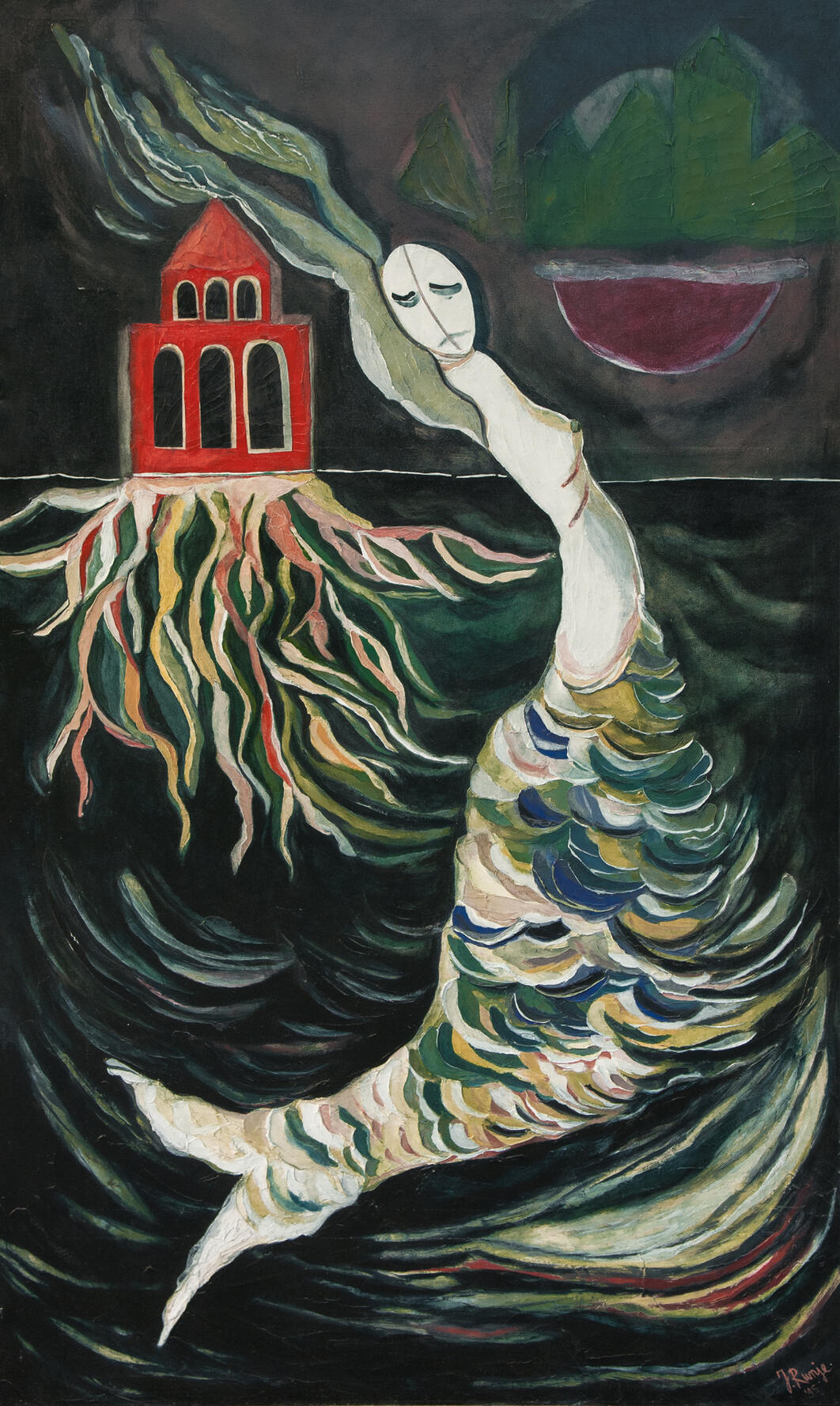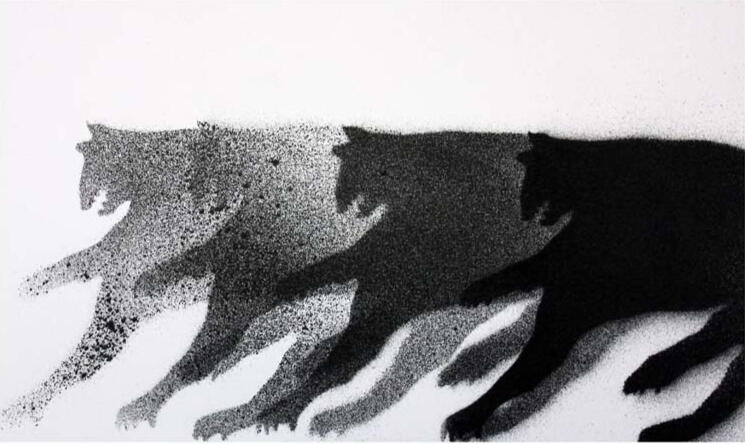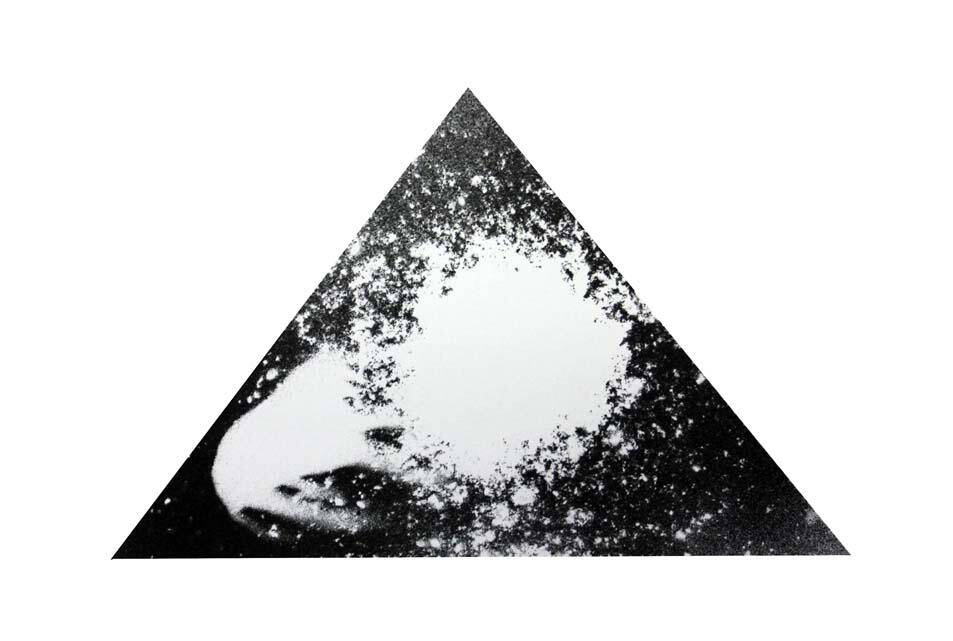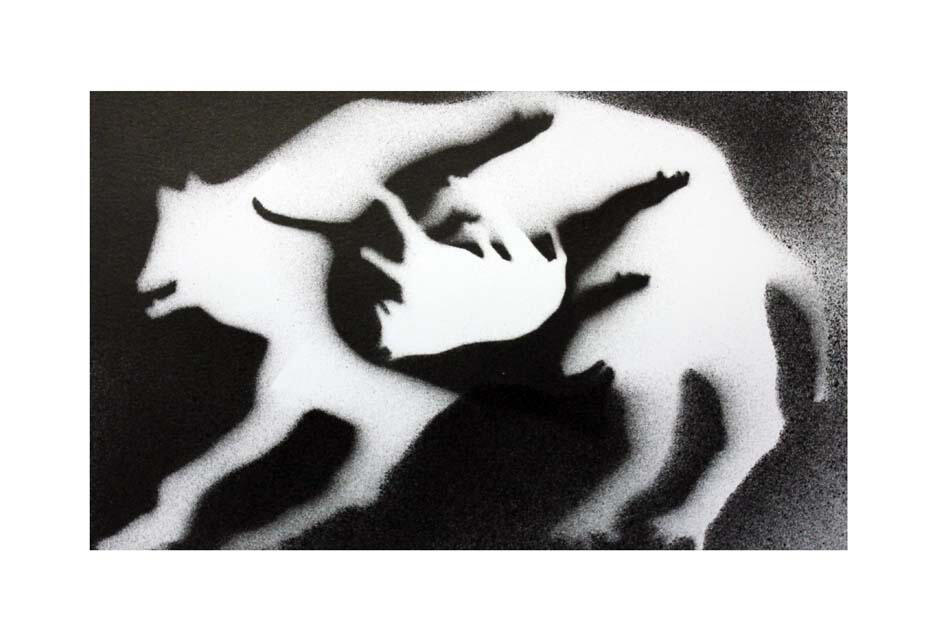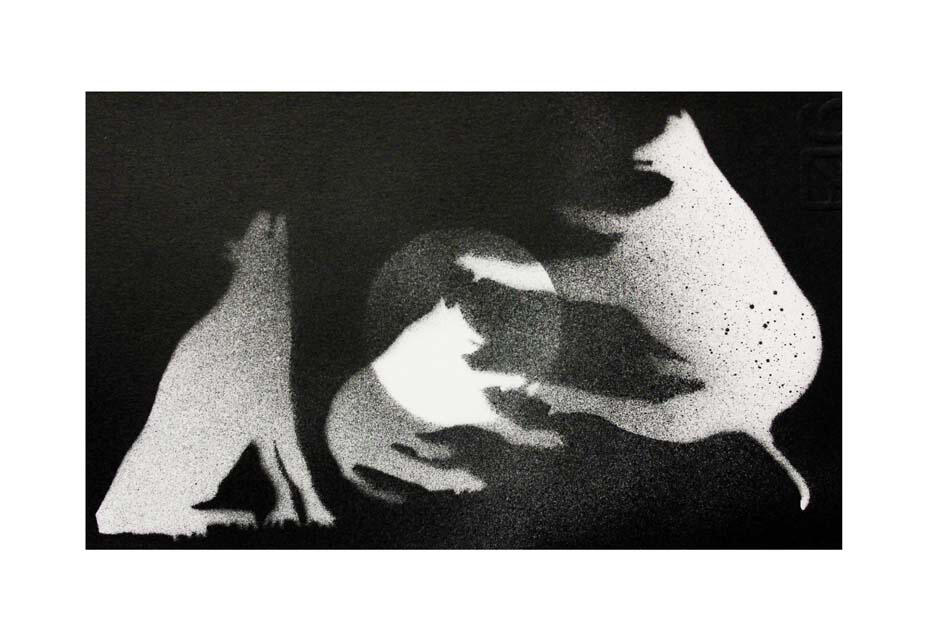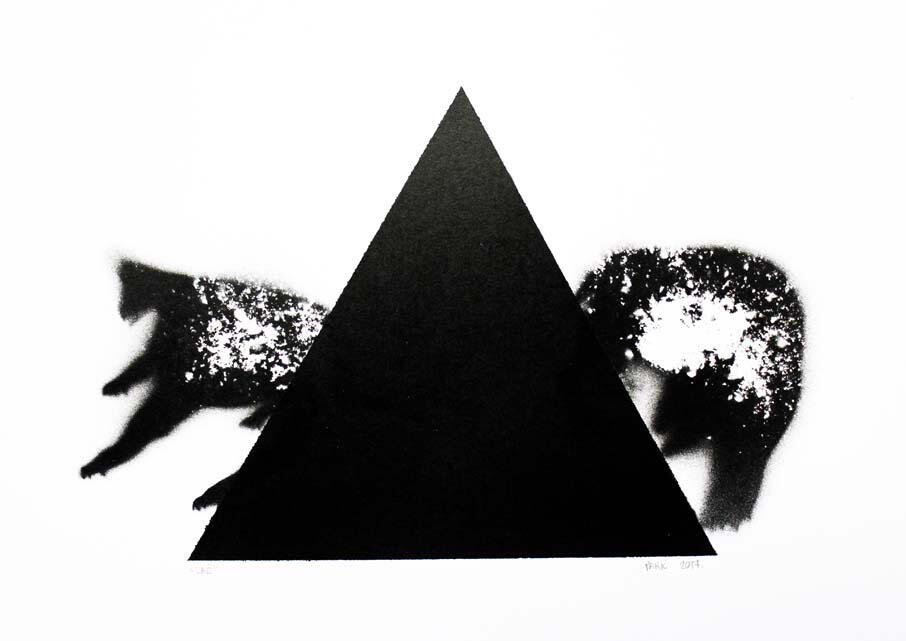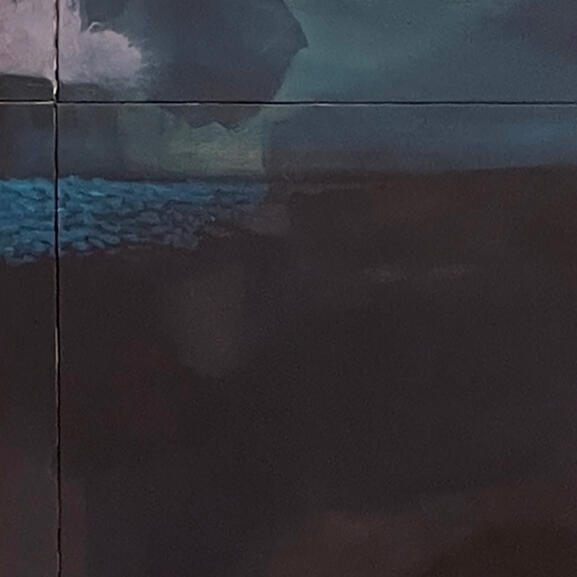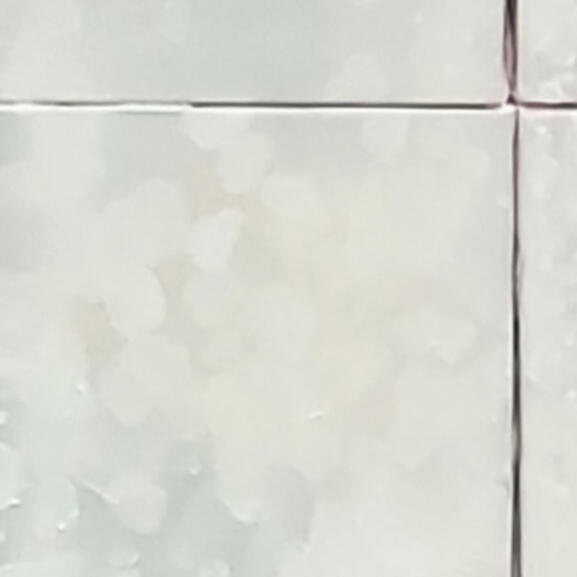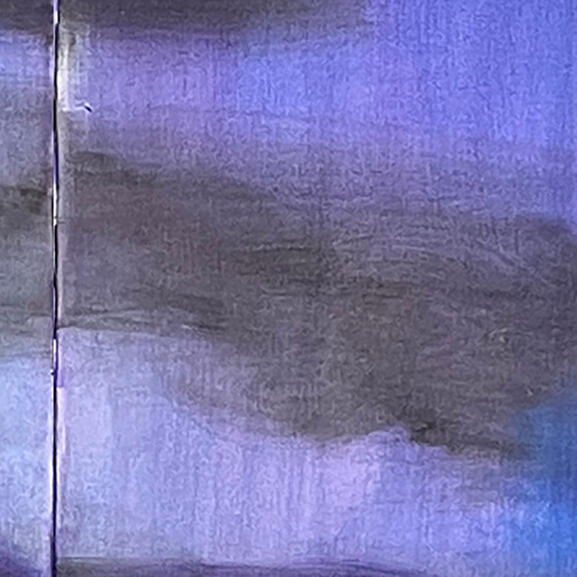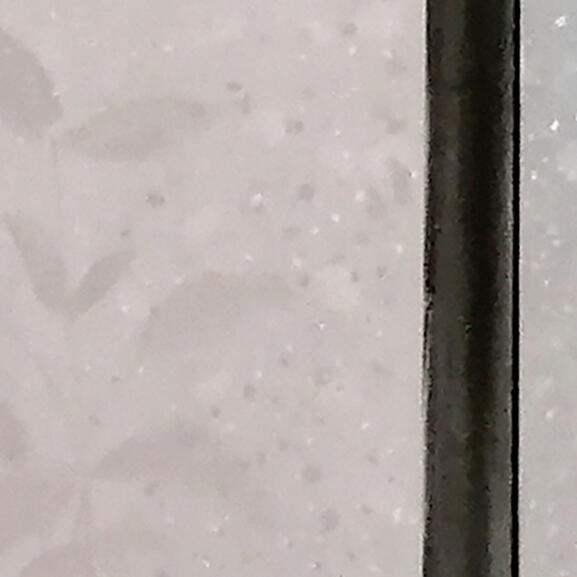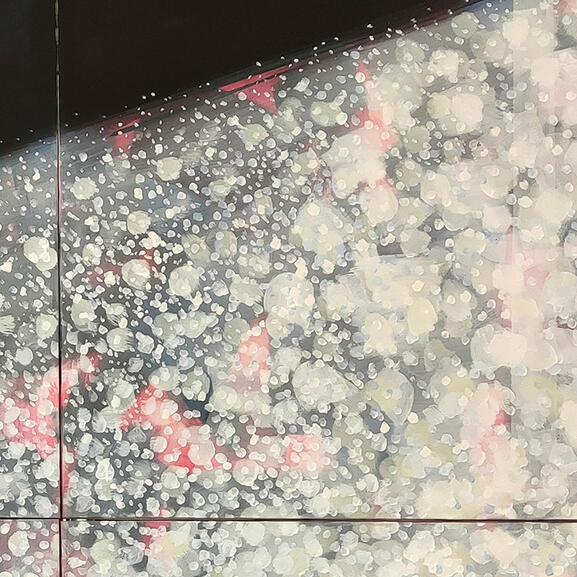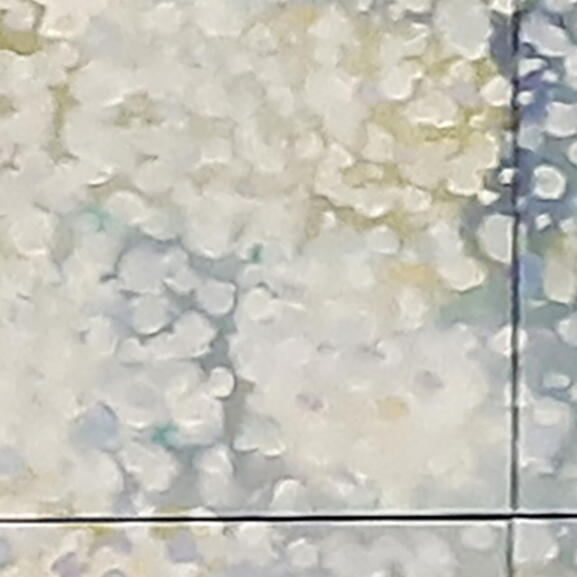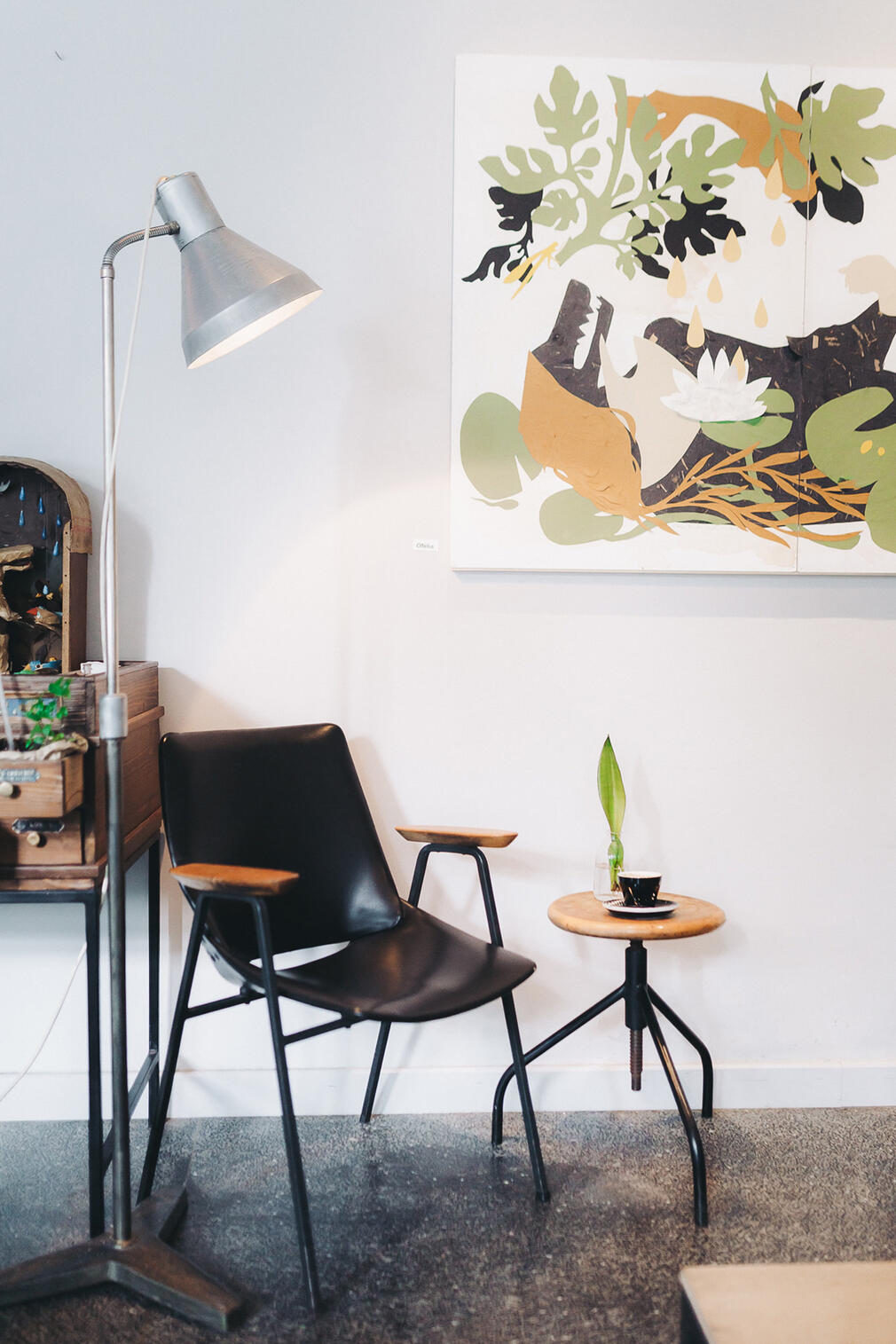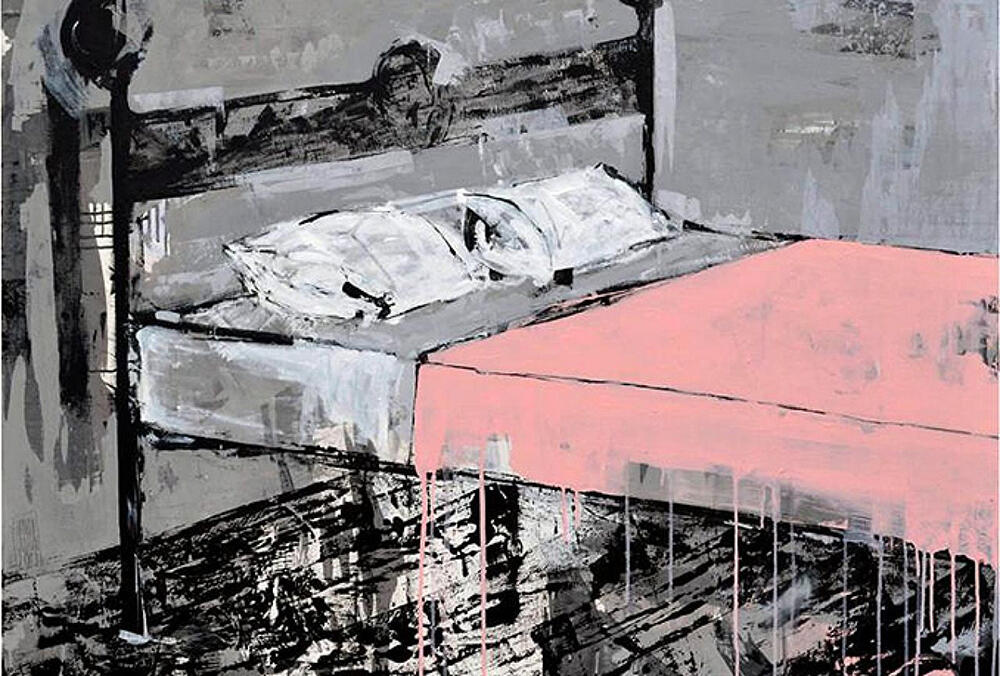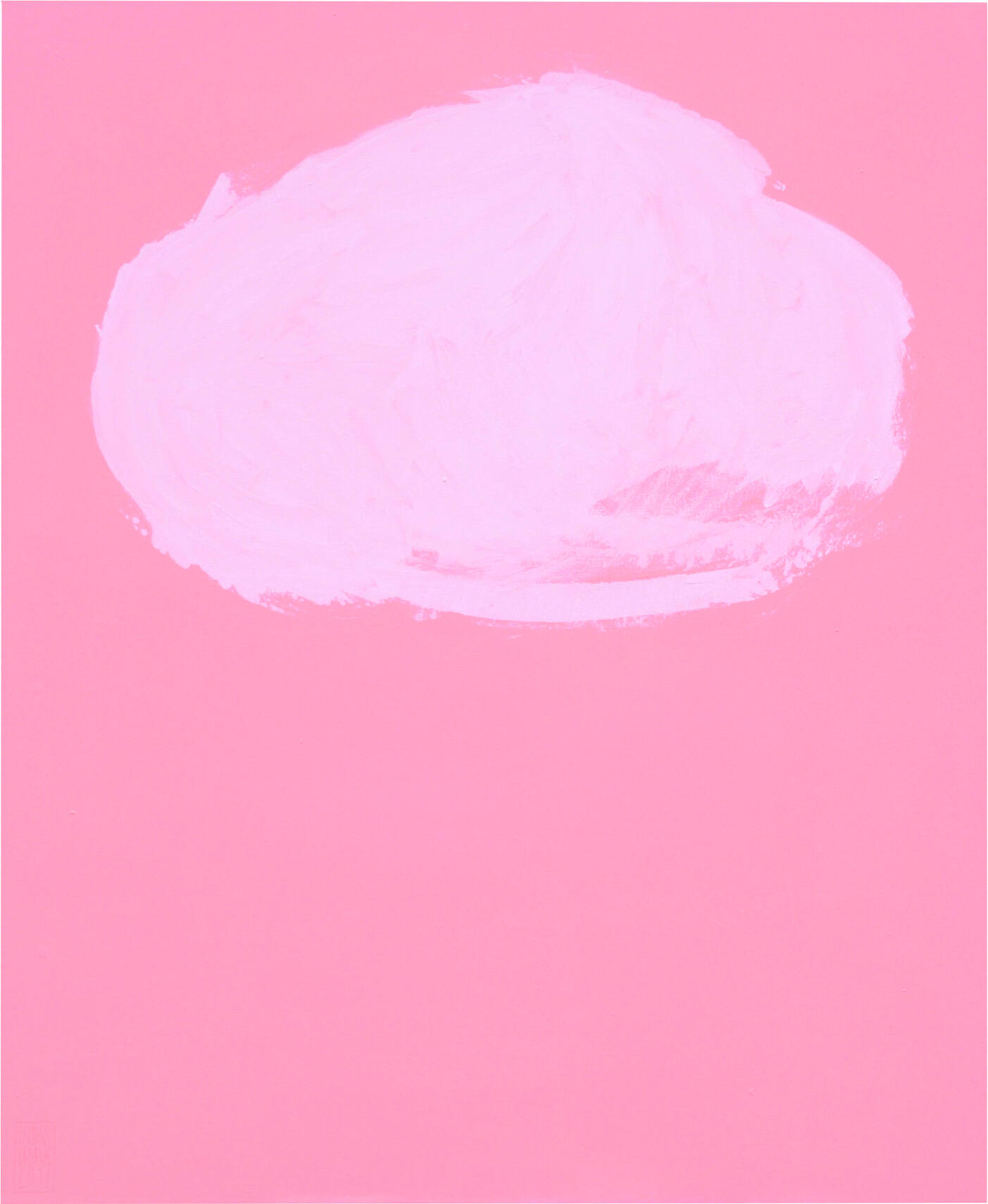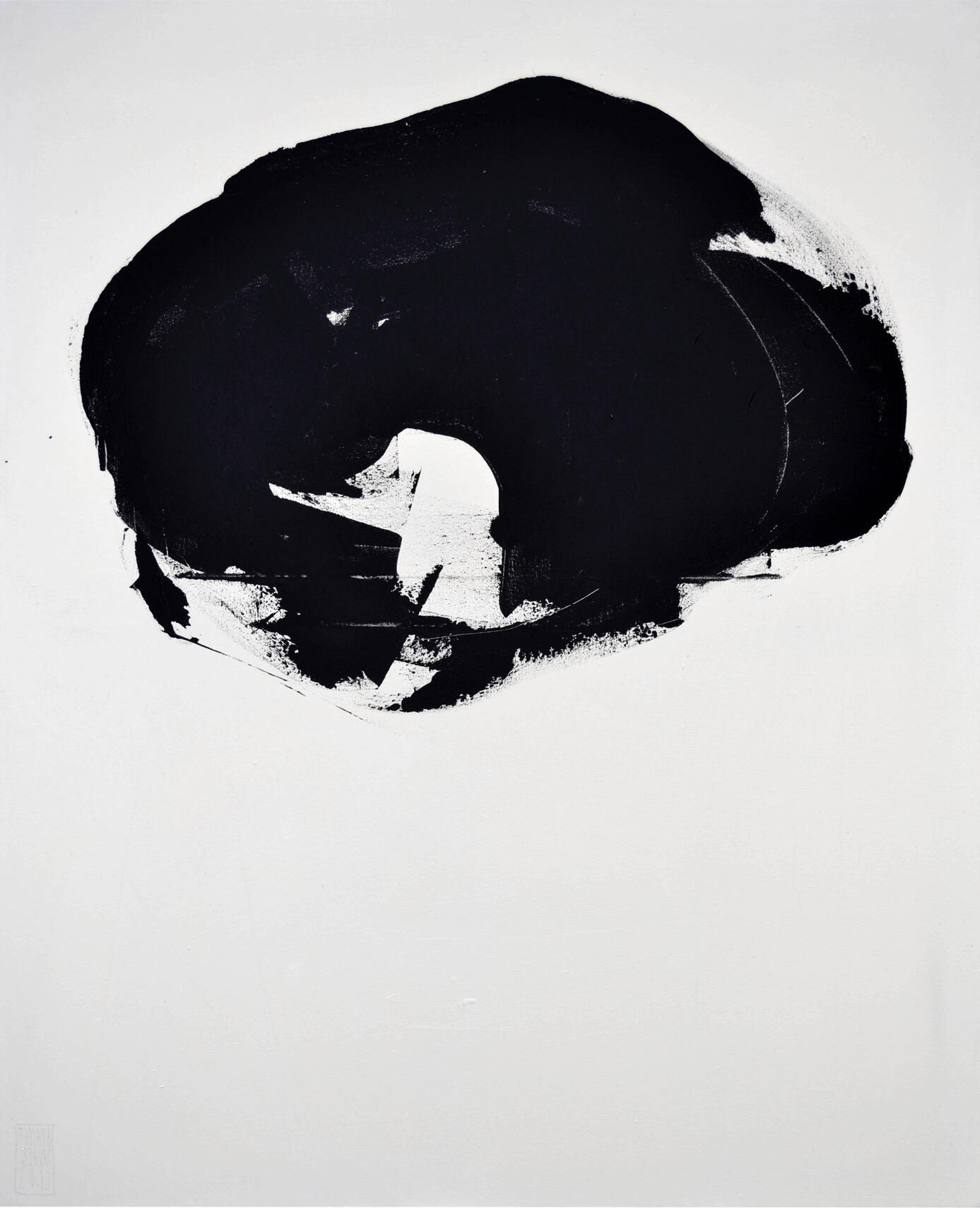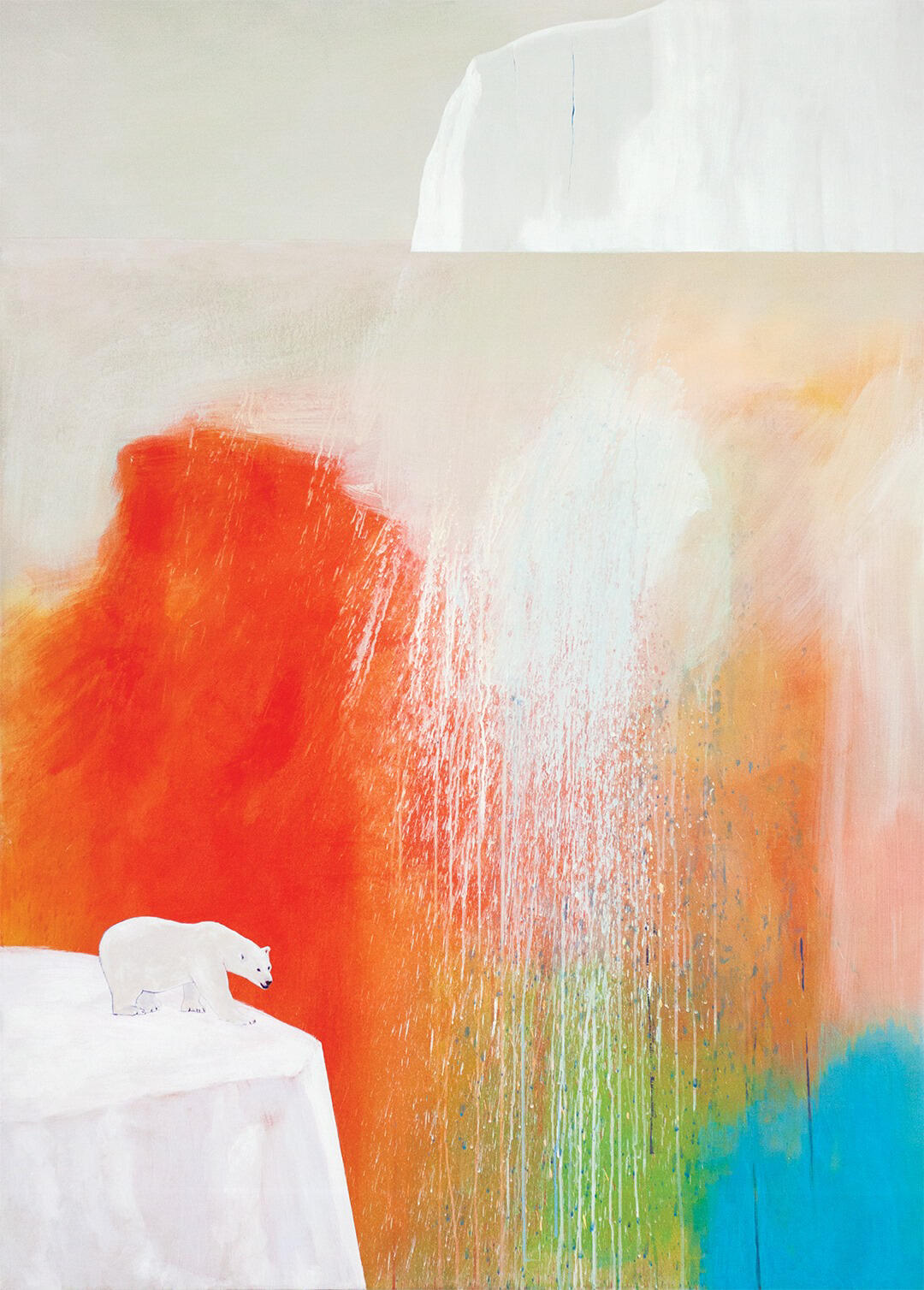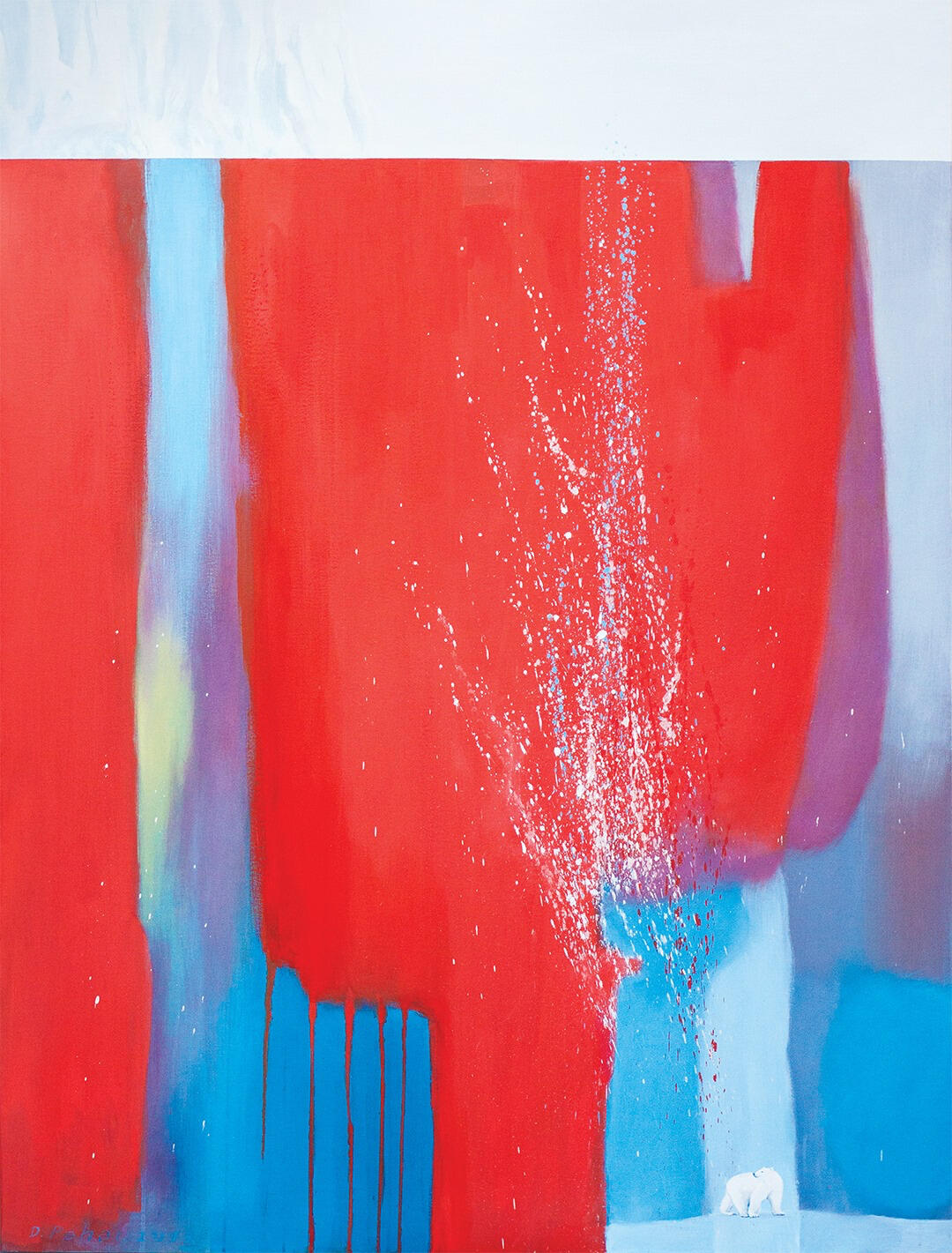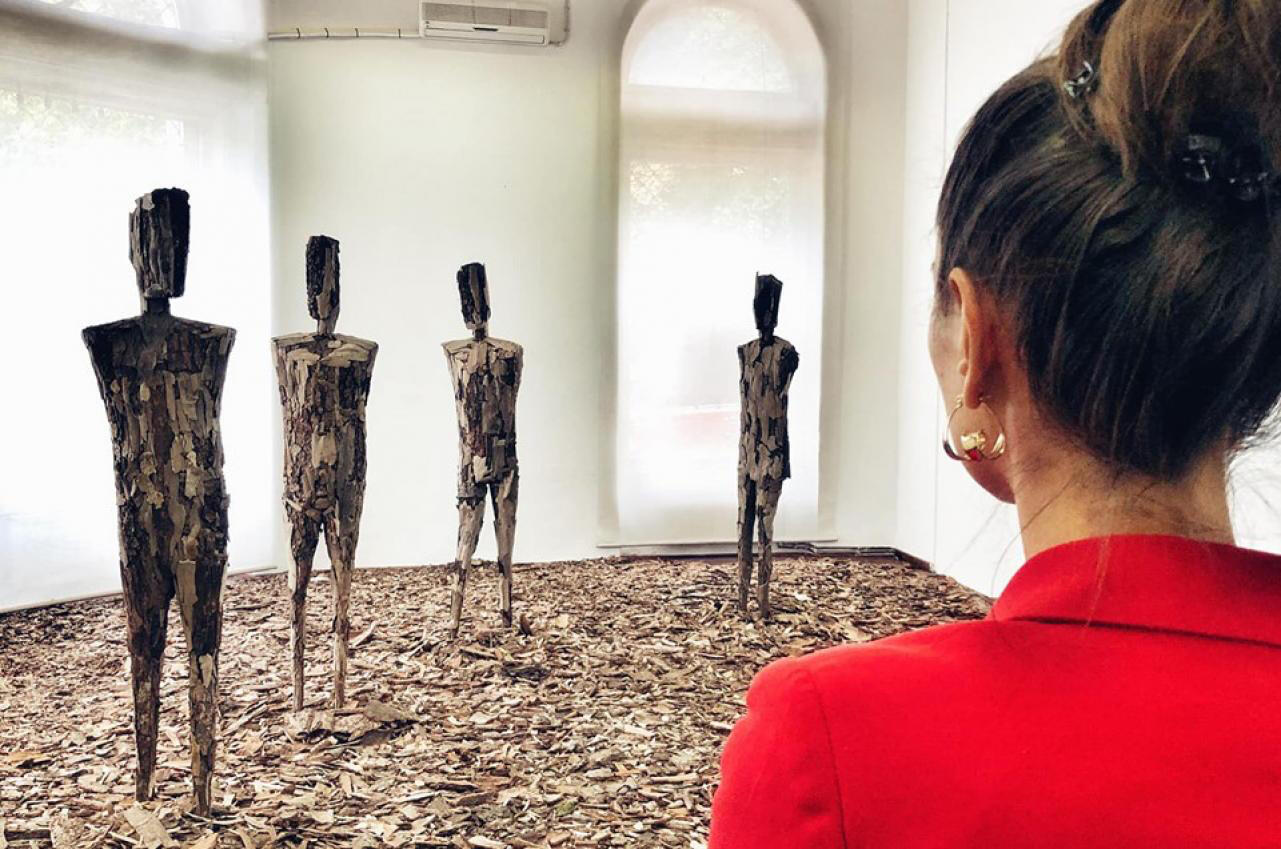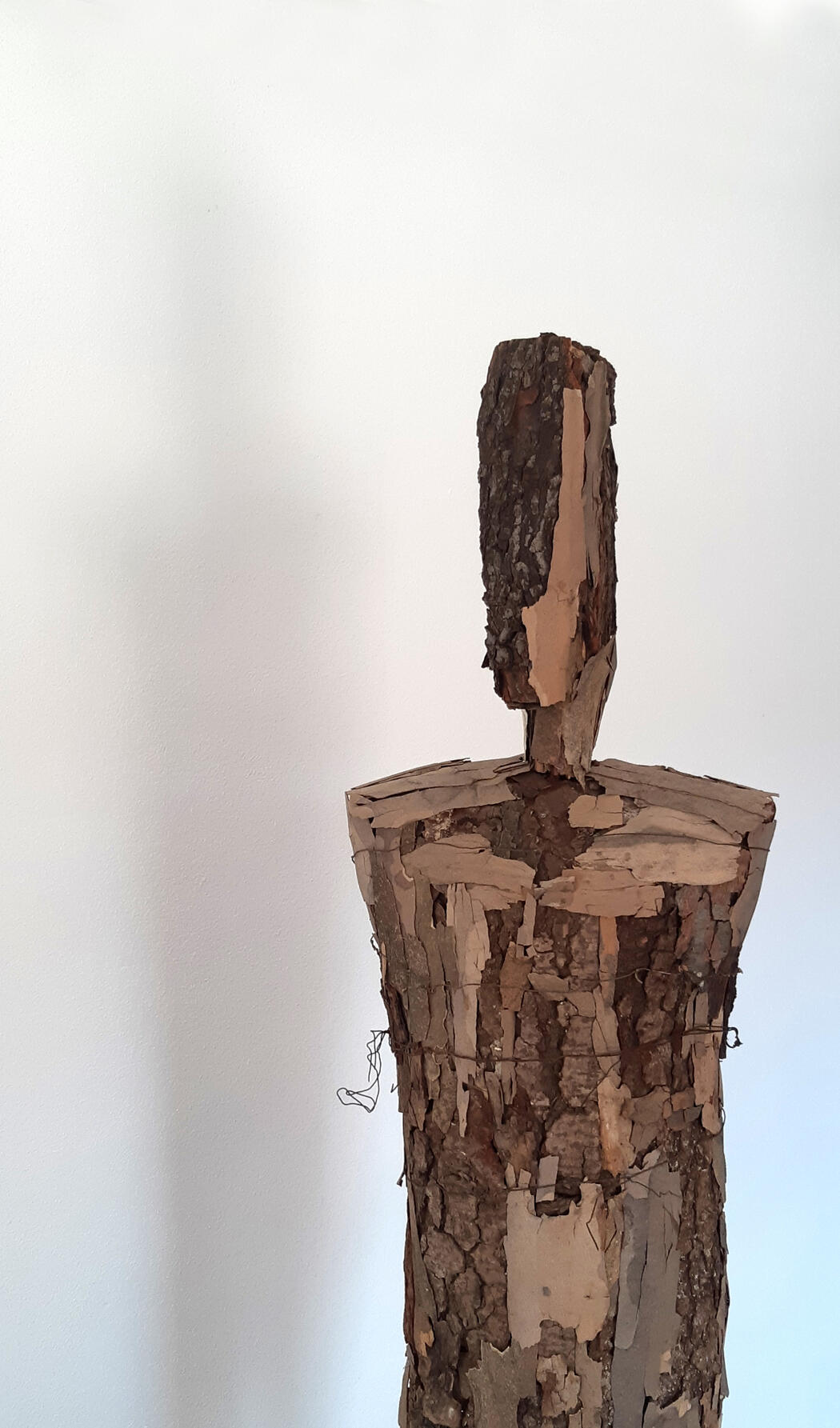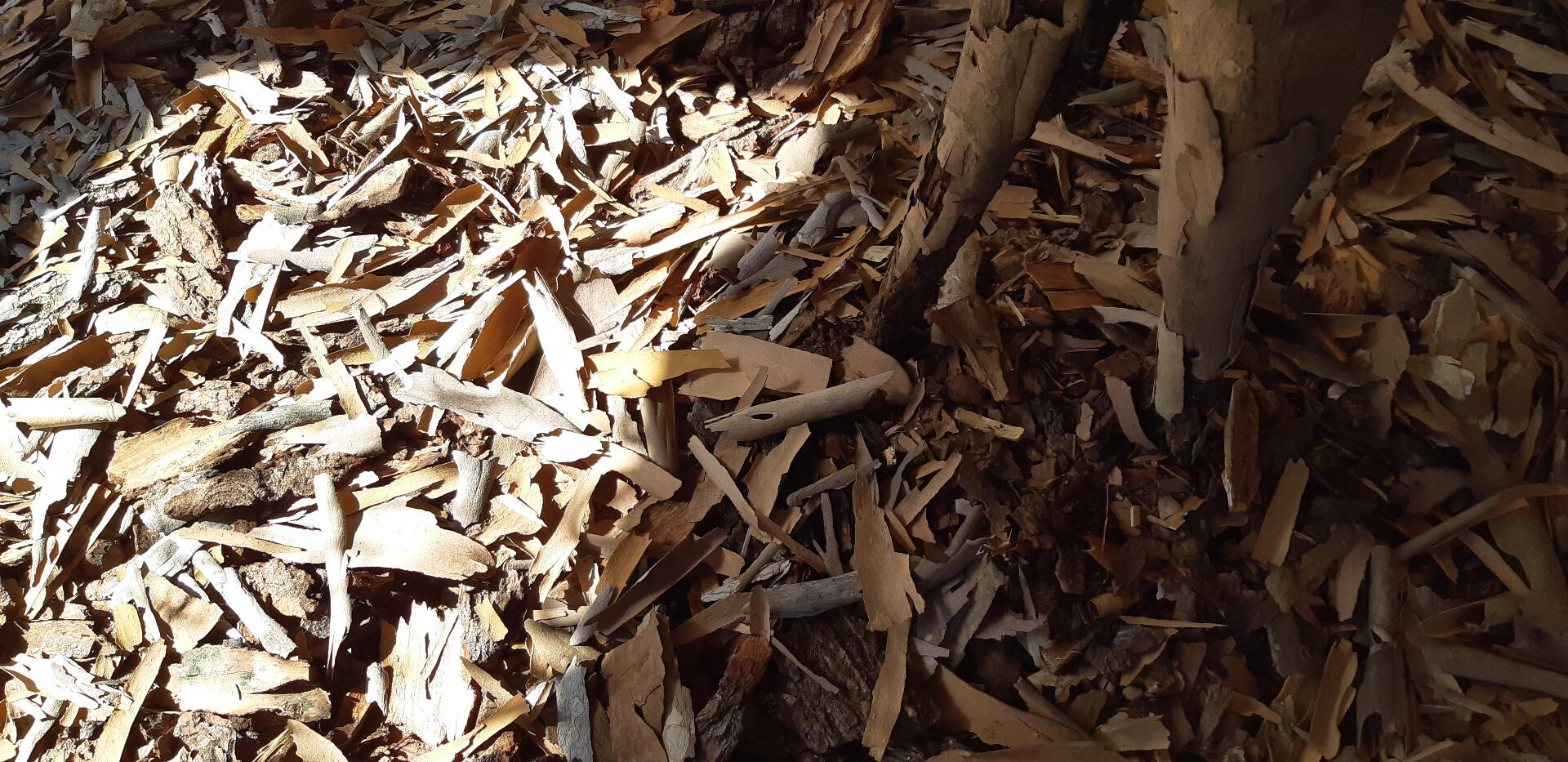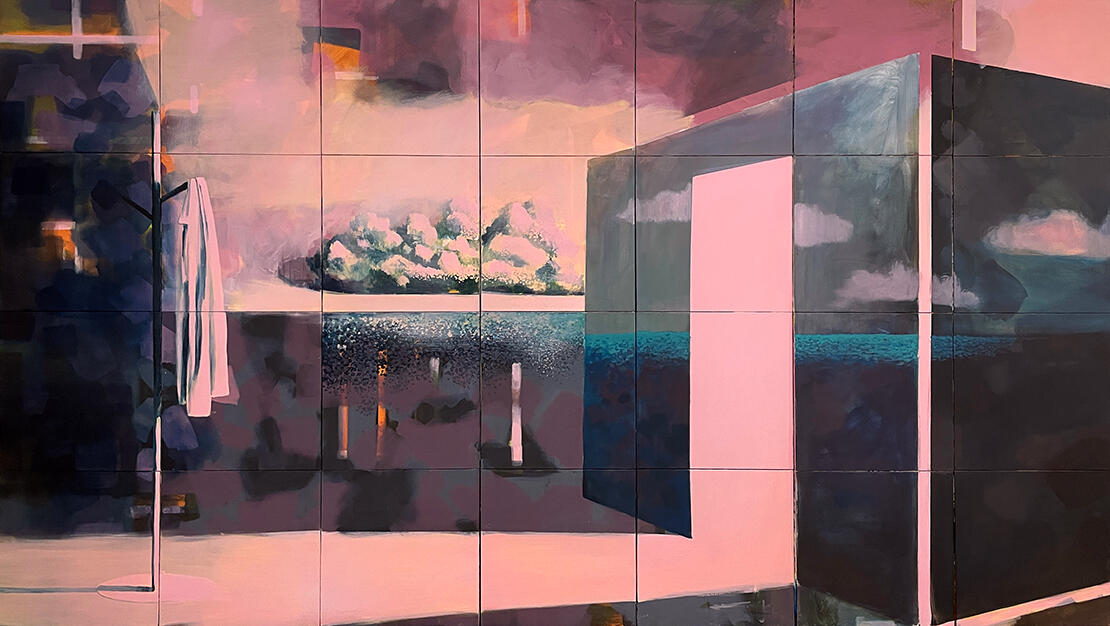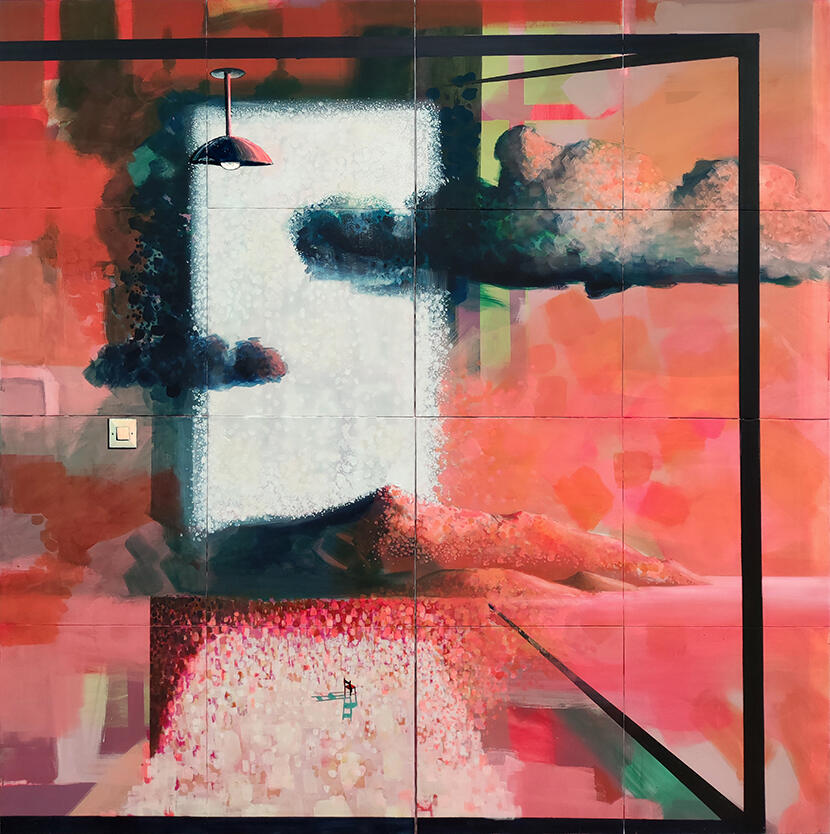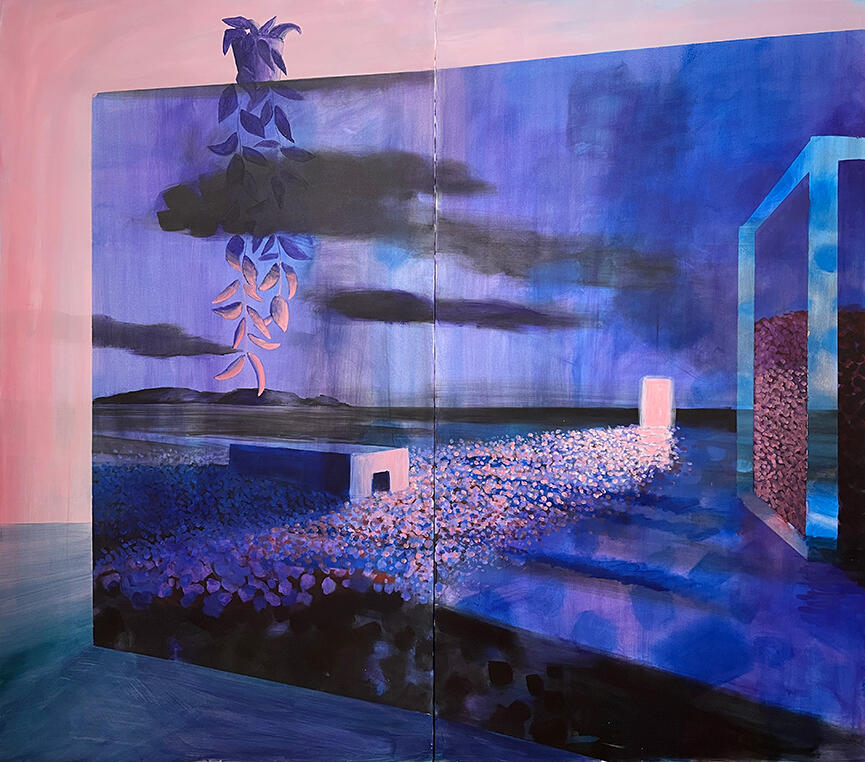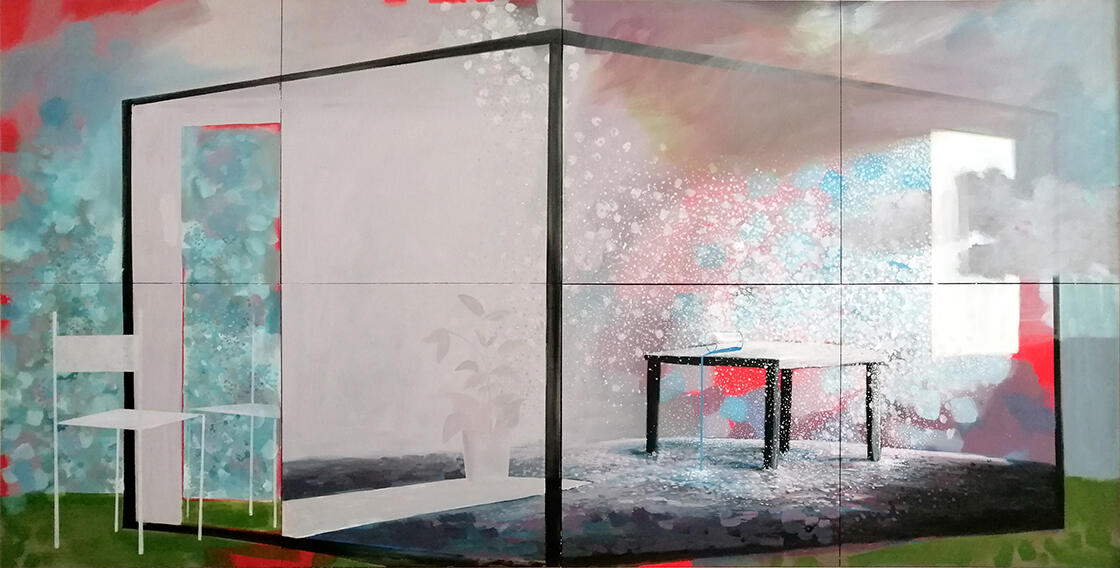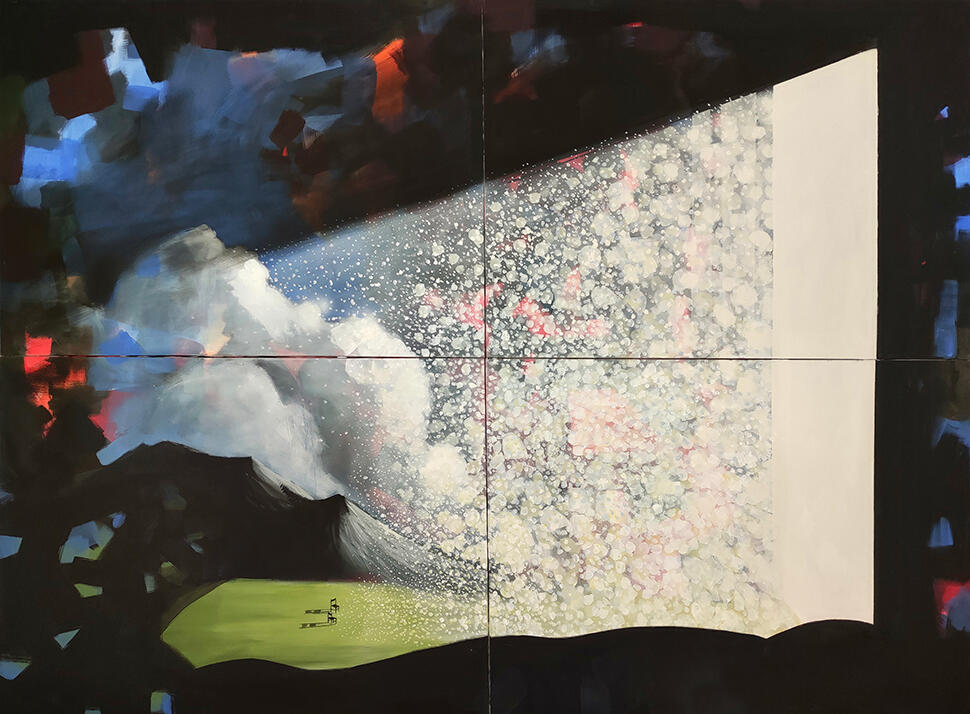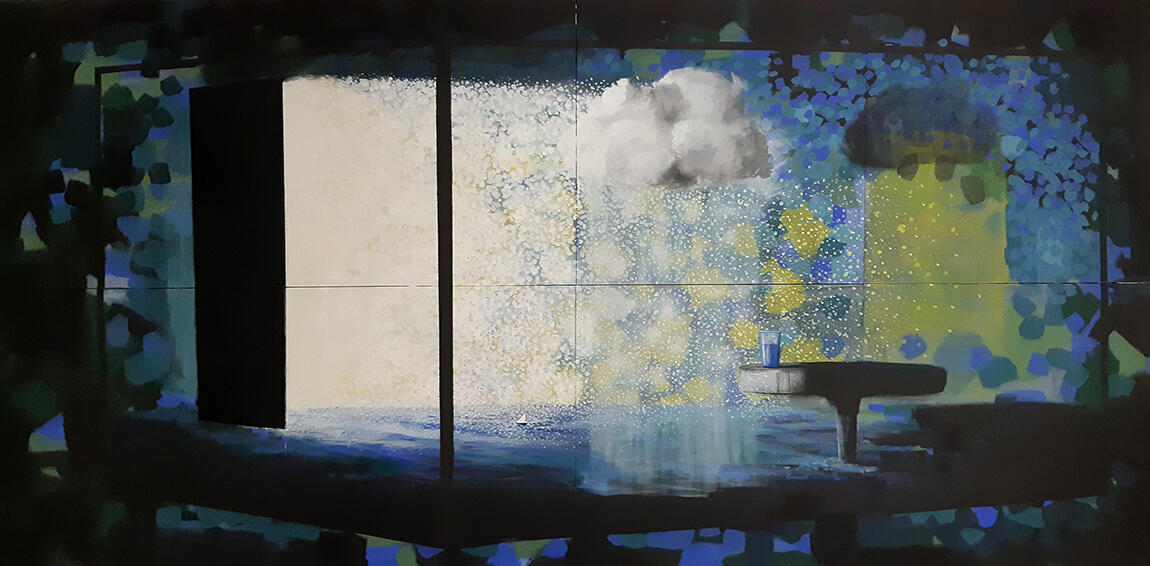_
The Final Painting by Jo Mi, gallery Vrba, Photo: Jure Paponja
The Final Painting by Jo Mi, abandoned tobacco factory, Photo: Jure Paponja
The Final Painting
Installation: November 2020 – abandoned tobacco factory, Ljubuški, BiH
Exhibition: November 5 - 15, 2020 – Gallery Vrba, Široki Brijeg, BiH
Artist:
Josip Mijić
The cracks between the organic forms of uneven clusters in the concave façade of the black, cubic socket, shine a bluish light. Under the fundamental black material, the thorny constellation of the artificial core, emotionally spills over.
The energetic portal of the forgotten forest affirms our presence, with human eyes we observe the raw substance, the final image, the prophetic call for the end of an epoch too-long. There is no going back to the past, the unstoppable organism reproduces its own reality; a cluster of free information and uncontrollable posts in which the existentialist being of possibility cannot survive easily.
Mijić’s mystical web of emptiness on the surface of a black box, reflects the root tragedy of the human nature, a burn-out that seeks the path towards the source of light in the algorithms of dataism. It spreads through the negative of the corpus, it pulses with the tissue of uneven lines and longs for the separation from the opposite.
The final image becomes the allegory of humanism; I am, the one who stands in front, and we are alone on the other side of the rift- infinite, constant, from the outside in, and vice versa.
To free the spirit in front of a work of art, strengthens the power of control over fear from reduction to the information through which outside influences burden us. The challenge of preserving humanism and free will is the basic task of every human being; love, friendship, patience in relationships and the ability to give something up versus the coldness and fear of closeness.
Written by Ana Clerc, November 2020
Video: Jure Paponja | Assistant: Ana Naletilić | Storytelling: Ana Clerc (as Brkić)
Video: Jure Paponja | Assistant: Ana Naletilić | Storytelling: Ana Clerc (as Brkić)
GIF's Ljubav je na selu (Love is on the countryside) by Mate Skoko
The revitalization of a Herzegovinian village
Exhibitions:
September 19, 2019 – Gallery Vrba, Široki Brijeg, BiH
October 23, 2019 – Gallery Virus, Mostar, BiH
Architect:
Mate Skoko
Curator:
Ana Clerc
Although the usual scene of the rural environment is described through a romantic image from the past, the revitalization of the village is a meaningful answer to modern life questions, so the old picturesque image is accompanied by new content that ensures better accessibility, and new content means new visual forms.
Skoko directly points to the need to organize traditional and contemporary with convincing ideas that he imposes as a logical sequence of development in the broader context of the revitalization of the Herzegovinian village. By continuously drawing parallel connected concave/convex curves, arhitecht forms a structure that affirms itself as an extensive guide through a diverse range of units. He presents the combination of styles as a necessity considering the differences in the height of the terrain for the purpose of realizing a curved construction that freely penetrates the protected natural space and takes care of the found vegetation. The stylistic language refers to a sense of space design that stimulates the expirience by playing with the textures of the materials used that it finds in the immediate environment. From a plateau marked by grouped green areas of local plant species such as a dandelion flower or an acacia tree from organic forms, the architectural vision focuses on adapting to the context. The all-steel structure of the porch is supported by a constellation of pillars that melt uncontrollably from the concrete foundations towards the reflective surface of the ceiling. The composition of the steel beams supports the substructure on which the effective porch cover rests and at the same time the roof of closed volumes which are mutually insulated by concrete walls. Simple details such as hooks found in the construction of the porch would allow the realization of various local practices; exhibitions of paintings or ornamental plants. The porch continues on steel roof structures whose openings are regulated by cypress vegetation. The polished surfaces of the inner floor that fill the given space are linearly opened towards the outer floor made of less refined material that is graded according to a wide picture of complete permeation with the landscape. In the elongated and narrow composition of intermittent rhythm, transparent facades of closed volumes are grouped and represent an excellent solution, especially when it comes to space deficit. The illuminated and airy, at the same time protected path of the promenade offers an idyllic view of the horizon, and on the other hand the view of the observer is occupied by a number of facilities such as a veterinary station, laboratory or library, depending on which side of the building. It could be said that visibility is a highly active component outlined in strategic places where it is primarily needed, such as places of parental or animal supervision but it is also widely represented through a sense of satisfaction and relaxation of residents and visitors.
Written by Ana Clerc, September 2019

Images: Mate Skoko | Mentor: Nikola Popić | Co-Mentor: Ivan Dugandžić | Consultant: Hrvoje Smoljanović
Paintings from the series Traveling dreams by Jasmina Runje
Traveling dreams
Exhibition:
October 28, 2016 – GKS, Metković, CRO
Artist:
Jasmina Runje
The step in which the past moment becomes subordinate to human's attitude, the artist (sub)consciously records, thus creating a symbol of a certain event, and with it the basic difference between the observer and the creator.
In these works, as if it is forbidden to distort the truth, what the artist experiences passes through her like the energy with which she builds a newly created image of the world - not embellished, but true. This means that the painter does not overemphasize morbidity, she is here guided on both sides through a spiral of lived moments, providing as much light as there really is left. At first glance, this appearance opens up a long-stacked herbarium, and further, it offers the viewer a pleasant journey through the artistic paradigm. The deformity of the figure implies infantilism, which is filled by a strong spiritual and physical process, and it is lost through grotesqueness, disappears in the continuity of work to eventually become a new character - a woman-bird. The unconventional and illusory way of perceiving nature gives birth to new and unusual creatures whose infantilism is not naive but turns the struggle with the ego ideal into the past with every step. Concentration on the entire process of formation is reflected in the plotted composition and the first measurable component that runs through several dimensions of valerian, density and shadows arranged flat and spatially. The muted color has a basic role in distinguishing plastic, and when it comes to light, the author makes an excellent and easy choice. That sense of color quality is reflected in two authentic shades, an accent of red and a warm green. Earth-colored intertwined strips provoke the burden of the physical body. The mutual dynamics of instinctive and thoughtful forms create recognizable scenes balanced by a circular rhythm, and thus an extremely stable composition. The basic challenge that lies in the knowledge of contact, ie sharp interaction with the observer, transforms these provided and composed concepts into the other, although the artist finds inspiration within the property. For this reason, these works mimic the subtlety of the artist, inviting us to reach deep within ourselves to discover the subconscious thread of truth, the idea of the Spirit, transcending pantheistic belief, because what we see is like a flash, a hallucination, implemented to provoke reaction and change.
Written by Ana Clerc, October 2016
Drawing Change of state by Vilim Parić
Act of life
Exhibitions:
November 28, 2020 – Gallery of Matrix Croatia, Mostar, BiH
June 25, 2020 – Gallery Vrba, Široki Brijeg, BiH
Artist:
Vilim Parić
The beauty of art lies not only in the realized visuals and construction of redirected aesthetics but also in the creative process of an artist, about his intimate experience of, and the difficult path to achieve his goal. The continuous appearance of the zoomorphic motif of the wolf in this visualizations, a corporate but also a lonely being, is an ideal personification of one of the dualities in human's existential program - the question of its socialization or exclusion. The mystical presentation of important life sequences here resorts in the author to the inherent construction of binary opposites such as those good-evil, darkness-light, positive-negative, artificiality-naturalness and certainty-uncertainty. With a sensitive approach to the theme of the family, the author creates scenes of an emblematic resort, while on the other hand, without gravity, there is a stage for playing in a deep dark environment. Questioning aesthetics with variations in the gradation of achromatic geometric and organic forms, spray experiments become a notion of human as a thought with which he is preoccupied. It is clear that in the semantic sense, author leaves traces that insinuate relations and personal transformations and metamorphoses, thus creating a completed dossier concerning the act of life. In the swirling composition of the samples, he establishes contact with the newly formed substance, and the sense of tone quality enhances the appearance of a minimalist expression in which an entropic explosion from a preserved mass corresponds to the brilliance of the aesthetics of damaged black-and-white photographs. The integration of perspective without much correction takes place in the activity of the organic surfaces in front of and behind the line of the triangle, which gives the composition the identity of a dramatic montage. Perception and opinion remain constant and stable as the amount of load of applied material alternates from scene to scene on organic and geometric shapes, so somewhere a dense dark mixture comes to the fore while in others there is an airy and floating association of delicately thinned material. The names of the works clearly testify to the identity of what is shown, and the completeness of the cycle is reflected in the repetitive performances of the dominant motif and in the consistency in the performance. In the final observation of incorporation in technical performance, there is a slight tendency to mentalistic approach and giving space to the spiritual and mystical, which is mostly due to the presence of Lynch's aesthetics of theater and curtains in coexistence with diffused light in darkness. This rounded art experiment is a possibility that is innate to human from the beginning - the power of direct management of a given time, a look at the past to feel the future, the art of rest and joy as we get lost in personal processes.
Written by Ana Clerc, June 2020
Drawings Fight, Mother, Family, Lie by Vilim Parić, from left to right
Fruits of burden
Exhibition:
September 30, 2021 – Franciscan Museum and Gallery, Široki Brijeg, BiH
Artist:
Željko Koren
Curators:
Dajana Šudić and Ana Clerc
In Zeljko Koren's new cycle, the author takes us on his way to the interior in the play as a peculiar self-hypnosis in order to reach his deepest thoughts and even encourage the observer to look for the same in himself. Inspired by the achievements of contemporary human, his work finds its foundations in psychology in order to eventually escalate in screens of fractal structure. In this relation, as a logical continuation of previous work, the author tries to describe the nature of the personality that extends along the spectrum of the two extremes.
In the dramatic contrast of light and darkness, the motivating light and its penetration into the dark structure of the image show the will to expose intimacy, provoking the observer to pay attention to the desire to move from the usual state. In frozen motion, it receives existence through light and darkness and signals the need to spot lonely objects, planes, ships, trees, chairs, an individual who has been discovered, caught, and invited to participate in the process. What is illuminated by light is forced into action and the self-conscious creation of existence.
In this selective confession of Zeljko Koren, the observer is a voyeur who cannot be a part of the surreal visualization of space, although with the dimensions of the format the author tries to isolate the viewer from the outside world and include him in the action. Images imply the limitations of our cognition and the creation of life in fear and desire. Cut-out mirror analyzes, windows towards the new space are elements for understanding the narrative character of the story of surfaces saturated with cell dots. Constructions immersed in the whole, such as screens and portals, reveal a concrete validation of space and classic painting tasks. A characteristic example of metaphysical painting is shown in the statics of movement blended into the environment without disturbing the space of the stage.
Written by Ana Clerc, November 2019
Collage Ophelia by Cella in Botanicar, Zagreb, Photo: Marija Laca
From the wolves perspective
Exhibition:
September 18, 2017 – Botaničar, Zagreb, CRO
Artist:
Cella Anita Celic
SymbolsAchieving harmony with cosmic energies would mean the ability to look into something true. As these energies actually determine our lives people have always felt the need to search for the truth. Often in the history of art, symbols have been part of artistic practice, representing mysteries close to the truth, but also carrying their burdens acquired in the past. In the age of semiocapitalism, the pinnacle of symbol manipulation, the conscious population seeks the path to truth in nature and the universe. Through her artistic work Cella Anita Celić stylizes zoomorphic and biomorphic symbols, thus emphasizing their original value and meaning. The favorite motif of the wolf undergoes transformations through forms and personalities, the author identifies it with herself, with every human being. The wolf is a shadow, a shadow from a certain perspective in whose vibration we recognize the animal character of man. In all the scenes he occupies the top of the hierarchical ladder, accentuated by form and color, followed by birds, of a transformed, somewhat idealized form in a powerful natural environment. Without excessive analysis, on the borders of the conscious and the subconscious, she actively and poetically records what is imposed on her through her own perceptions as a current necessity: she uses well-known women portrayed through art history as examples of women, giving them new meaning and new space. By visualizing through an intuitive wolf character, they take on new qualities, discovering a strong woman - a warrior and a sorcerer.SpaceBy effectively combining reduced cut shapes, metamorphic 'living' shadows idealized in the range of the corresponding symbol, the author builds theatrical scenes located in the acquired interspace. By knowing space in terms of known dimensions, but also through a broader picture of the infinite possibilities of existing, it provides an essential component in shaping discourse, which allows the form to be placed in a new unique perspective (previously mentioned interspace). The complexity of the syntagm is influenced by diverse and noticeably inserted variations of rhythm movement on a given surface. Muted colors, inspired by a romantic alternative melody, and precisely shaped constructions record the energy of the movements, gestures or characters of the staged creatures. The contour is a shadow created on the background due to the entry into the "real" space, which is most adequately achieved by a totem - a self-portrait.
Although Cella’s works largely reveal her views, the artist leaves room for mysterious journeys to inspire both others and herself. Having confidence in her own artistic instinct and the possibility of communication through artistic expression, the author indulges in the beauty of the endless possibilities of artistic design in space.
Written by Ana Clerc, September 2017
Painting Bed by Tamara Herceg
Overthinking
Exhibition:
July 14, 2016 – Gallery Aluminij, Mostar, BiH
Artist:
Tamara Herceg
A positive emotional explosion as a result of overthinking is a stable fulcrum for the creative process of an artist who is able to maintain control over negative thoughts.
By combining artistic elements into a composition of contemporary and open aesthetic context, Tamara builds an art world that she shares freely with other artists. Turning unhindered within a given moment, he presents us with a frozen image of the past, a desolation that breathes poetically, freely and meaningfully. With this approach, the artist leaves a heart note in the thoughtful course of what she accomplishes, narratively depicts the world beyond property, and on the other hand achieves more than an association to the object we are observing. Expressive emotions remain recorded in slow lines that mark the completed task of parting with the illusion of time and space. Such a unique and intimate concept full of sacrifices swirls in the structures of the art world that is just passing, so if it is a look back, it remains only in the picture because the author does not look back.
The right to stiffness is reflected in the careful scratching of the surface, the added raster of textures and the prints on the exposed rhythmic surfaces. The craft qualification here reaches the established mean of qualitative measures. Thoughtful and measured exposure ultimately results in a direct scene that is gradually shaped with each new application, whether it is a "forced" application or a more precise one that builds a virtual image element. Abandoned stains created by the first coats and scrapings, with their layout, come out of the classic notion of perfect aesthetic sizes, where a short flash of dada effect can be read. The classical element described by the same automatism, with an extensive and fast movement, complexly intersects the discarded surface. The color is primarily exposed in dim light so that on an almost valence surface the same valerian length shines in full splendor. At the beginning, the suppressed element of color later in the synthesis with the selected scene dominantly and retrospectively comes to the surface. Likeable colored surfaces (melted blue, cool pink) thus enter the space of popular culture and are one of the most common contacts with the observer. At the same time, the simplified moment vibrates with the magnified tape of a familiar scene. The author forgets to look through the prism of an easily recognizable cut, in her case everything else is legitimate if artistic dignity is preserved.
Written by Ana Clerc, July 2016
Paintings White thoughts and Black thoughts by Tamara Herceg
Paintings from the cycle Lost in Anthropocene by Dario Pehar
Lost in Anthropocene
Exhibition:
September 16, 2020 – Gallery Queen Katarina, Mostar, BiH
July 13, 2021 – 49. Teather festival, gallery KSC Bugojno, BiH
Artist:
Dario Pehar
Curator:
Ana Clerc
By hermeneutically illuminating Dario Pehar's artwork we discover the concept of existence, the painter's experience of the personal natural cycle found in the current phase of the Anthropocene period. Through chaos to the cosmos, mimesis and pantheism, the idea of experience and causality, all the way through to holographic principles, we are in the anthropocene presented in ontological terms as a result of the vision and existence of feelings in our brains.
In the movements that are subordinated to human will as a complex of pastel spectrum with the possibility of emerging from the frame in a new expression of intense color as a consequence of the impact energy of existence, he creates a visualization of the primary elements of nature in a new sequence. Pehar's paintings are synchronized layers of emotions, the product of psycho-motorical experience in electromagnetic wave structures in which the aesthetic process is imposed as an overall composition of comprehensible space. The actualization of the legacy of existentialism creates an empirical dimension to the concept of existence: a lineage of territory, demarcation, escapism, or, in the end, only a sketch of the daily change of states and emotions. In the powerlessness of the fusion of the horizon, experiences and norms, curiosity and ultimate consistency, creativity and meditation collide and in Pehar' paintings we become a humorous visualization; sublimation of a bear looking back at chaos. In this concept, the world based on literary and historical grounds is reduced to the evolution of morality in relation to the raw tendency of the project of being. The composition enables the shaping and reorientation of sensory perceived matter in infinite direction. The visual description of the chosen frequency manifests altruistically. In alternating perspectives on the paradigm, we discover the pursuit to the top in the construction of personal aesthetics, a strictly balanced composition, and the care of forms in said given thought conditions. The narrative blend of the two opposing energies is presented in deep stratified layers. The progress ends in an expressive and free form. Pehar's consistent composition is Apollonian and the anthropocene is touched by an allegorical visualization of the endangered polar bear to indicate the psychological and material consequences of human actions on earth. In a slight paradigm transition, the message about the universal incompleteness in contact with nature is predictable in relation to the rapid focus on transhumanism, even with the question of the non-ethological nature of human freedom. He does not shy away from resemblance as a true principle; and serves here as an activist call to arms to awaken awareness of the importance in shaping aesthetics, because in the end, »we have art in order not to die of the truth!« as Nietzsche said.
Written by Ana Clerc, March 2020
From the exhibition Material, shape, vertical by Boris Orenčuk, National Museum and Art Gallery of Bosnia and Herzegovina, Photo: PR
Material, shape, vertical
Exhibition:
September 12 - October 10, 2019 – National Gallery of Bosnia and Herzegovina, Sarajevo, BiH
Artist:
Boris Orenčuk
Curators:
Danijela Ucović and Ana Clerc
Contemporary art often finds itself in various contexts - forms from which it blooms, leaks, scatters or rots, is subject to the manipulations of time itself precisely because of its tautological nature in whose narrow circle we find the sources of the movement towards freedom. In the deficit of self-criticism of contemporary human, self-affirmation becomes common but also insufficient. In contact with the dissolution of organic material, Orenčuk freed himself with recurring repetitions in a space in which his figures re-exist, whose constellation and choice of natural material in the making remove all unnecessary labels from them. Systematic in its production, it painstakingly lands perishable material, aware of dematerialization and the necessity of decay, at the same time in its emergence and disappearance. With sincere authorization, he actualizes the obsession of patching the gaps that bring out the alternately smooth and vibrating surfaces of the figures. These are constructions in which from different perspectives we see different emotions, states of being, the direction of visuals that the author achieves with a wealth of sizes, many textures and tones, dignified or fragile depending on the position of the observer, not related to existence but to events. The research approach lays a new foundation in a platform that ensures the sculptures' survival on several levels: whole bark bark in a small space, decaying individuals, as scattering parts of the whole caused by constant repetition. The anthropological association seeks identity through the equivalent mass of the platform, the circular interaction of memory through identical material that dominates form. Concise "moving" specimens establish contact through a direction oriented light source. Uniform synchronized transit is a visualization of a dialogue burdened by global changes affecting man, but on the transforming faces we again find traces of the peace we attribute to the study of the works of the old masters. The autochthonous performance material is a romanticized label, created from the bark of so-called Mostar plane trees. It is involved in an interactive group of sculptures whose existence is associated with a silent march of wooden citizens corresponding to the general crisis of modernity, causing deep feelings and even fear.
Written by Ana Clerc
From the exhibition Interactive Memory by Boris Orenčuk, Gallery Vrba, Bosnia and Herzegovina, Photos: Željko Koren
Ana Clerc
art historian | curator | creator
born in 1989
Member of
HKD Napredak, Croatian Cultural Society
Vereinigung der Kunsthistorikerinnen und Kunsthistoriker in der Schweiz
Education2021
Project Management - BNF University of Bern
2021
Scientific Assistant at Schulmuseum, Bern
2019
Leading Expert at art symposium PULS, Garevac
2016-2019
Curator and member of the art council at gallery Rondo, Mostar
2016-2018
Project manager at Association of Croatian fine artist in Federation
of Bosnia and Herzegovina
2015-2016
Curator at Gallery Queen Katarina, Mostar
2015
MA in Art History and Philosophy, University of Mostar
2013
Cultural Anthropology of post-socialism and Czech cinematography,
Erasmus Exchange, Masaryk University, Brno
2008
School of Fine Arts, Mostar
Selection of curatorial workLost in Anthropocene
Dario Pehar, Gallery Queen Katarina, Mostar, (BiH) 2020Material, shape, vertical
Boris Orenčuk, National gallery and art museum of Bosnia and
Herzegovina, Sarajevo (BiH) 2019Flucht
Martin Ivicevic, Kunstkantine, Berlin (GER)Interacademia
Academy of fine arts of the University of Mostar, Mostar (BiH) 2019K’o Lekcija
Gallery Rondo, Mostar (BiH) 2018Selection from the legacy of Nedeljko Gvozdenović
Academy of fine arts Belgrad, Belgrad (SRB) 2018Provette del passato
Željko Koren, Biennale Agna 2018, Agna (IT) 2018Contemporary Art Collection for the Permanent Exhibition
Gallery Queen Katarina Kosača (BiH) 2016Change
Gallery Queen Katarina Kosača (BiH) 2016
List of publicationsThe listed works have been published under my former surname FilipovićFilipović, Ana The final painting, artwork for meditation . Akademija Art . 2020; Gallery Vrba 1-2
Filipović, Ana Lost in anthropocene. Magazine Artist . 2020; School for Fine Arts Mostar 35-36
Filipović, Ana Act of life . Act of life . 2020; Gallery Vrba 1-2
Filipović, Ana Interactive memory . Interactive memory . 2019; Art Museum of Bosnia and Herzegovina 1-2
Filipović, Ana Revitalization of Herzegovina village . Ljubav je na selu . 2019; Gallery Virus 1-2
Filipović, Ana Provette del passato . Agna Arte . 2018; 84-85
Filipović, Ana Street art Mostar - an example of activation of the individual in favor of the development of collective consciousness . Magazine Buka . 2018
Filipović, Ana Transition in black . Transition in black . 2018; Francis Museum 1-3
Filipović, Ana Flucht . Flucht . 2018; Kunst Kantine Berlin 1
Filipović, Ana Gestures. Gestures . 2018; Gallery Rondo 1
Filipović, Ana Survival . Survival . 2017; Gallery Rondo 1-2
Filipović, Ana Overthinking . Overthinking . 2016; Gallery Aluminij 1
Filipović, Ana Change . Change . 2016; DHLUuFBH 1
Filipović, Ana Next Generation . Bulletin DPUmH . 2016; 13
Filipović, Ana Kalamota Art . Bulletin DPUmH . 2016; 12
Filipović, Ana Universal (un)reality . Universal (un)reality. 2016; Gallery Queen Katarina Kosača 1
Filipović, Ana Human and nature . Human and nature . 2015; Gallery Tau 1
Painting Naked in the front of another's world by Željko Koren
Painting Inner dissension by Željko Koren
Painting Touched by the sun remains warm by Željko Koren
Painting Fruits of burden by Željko Koren
Painting Call to adventure by Željko Koren
Painting Overcoming my limitations by Željko Koren
Sound by Ana Clerc
